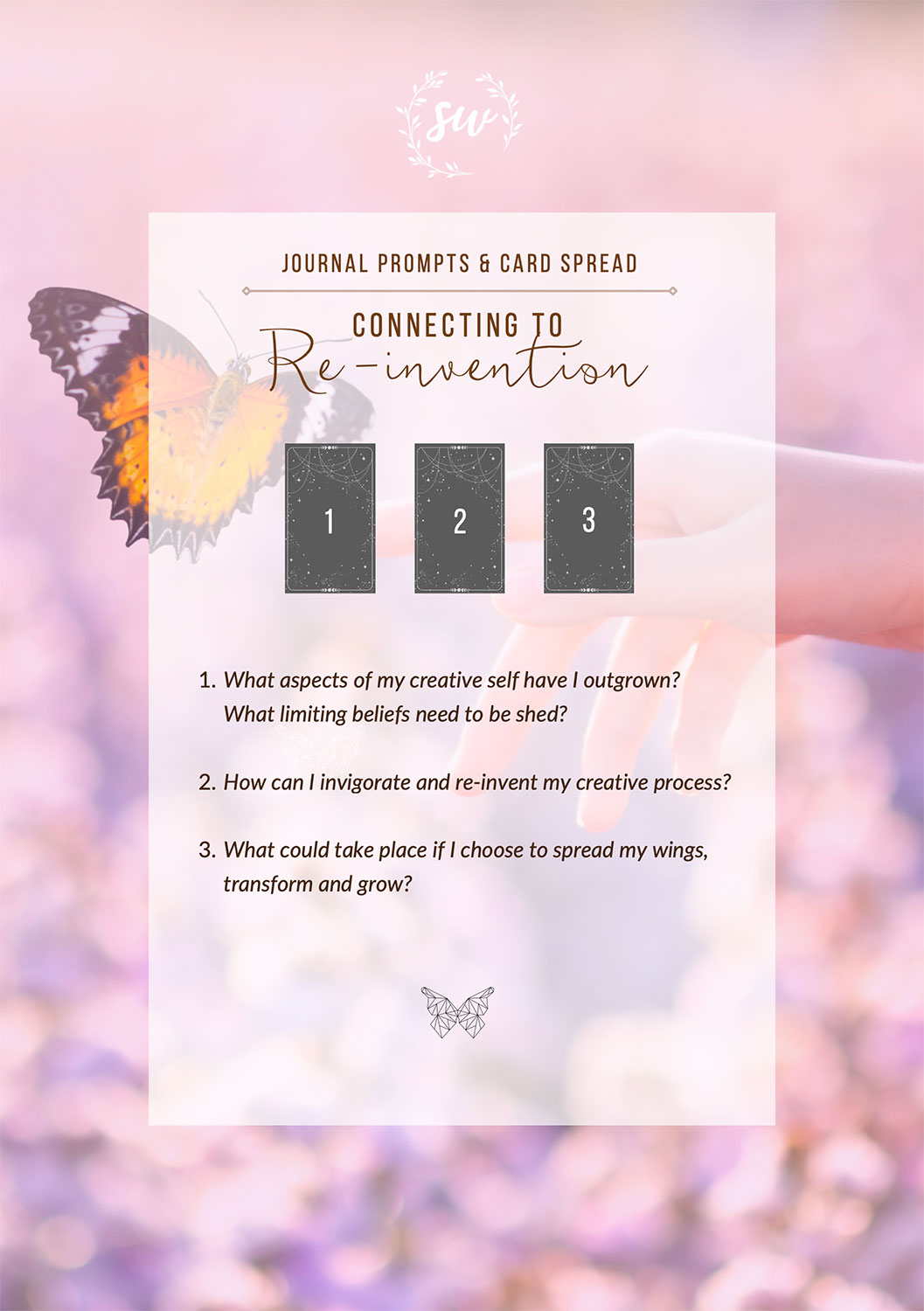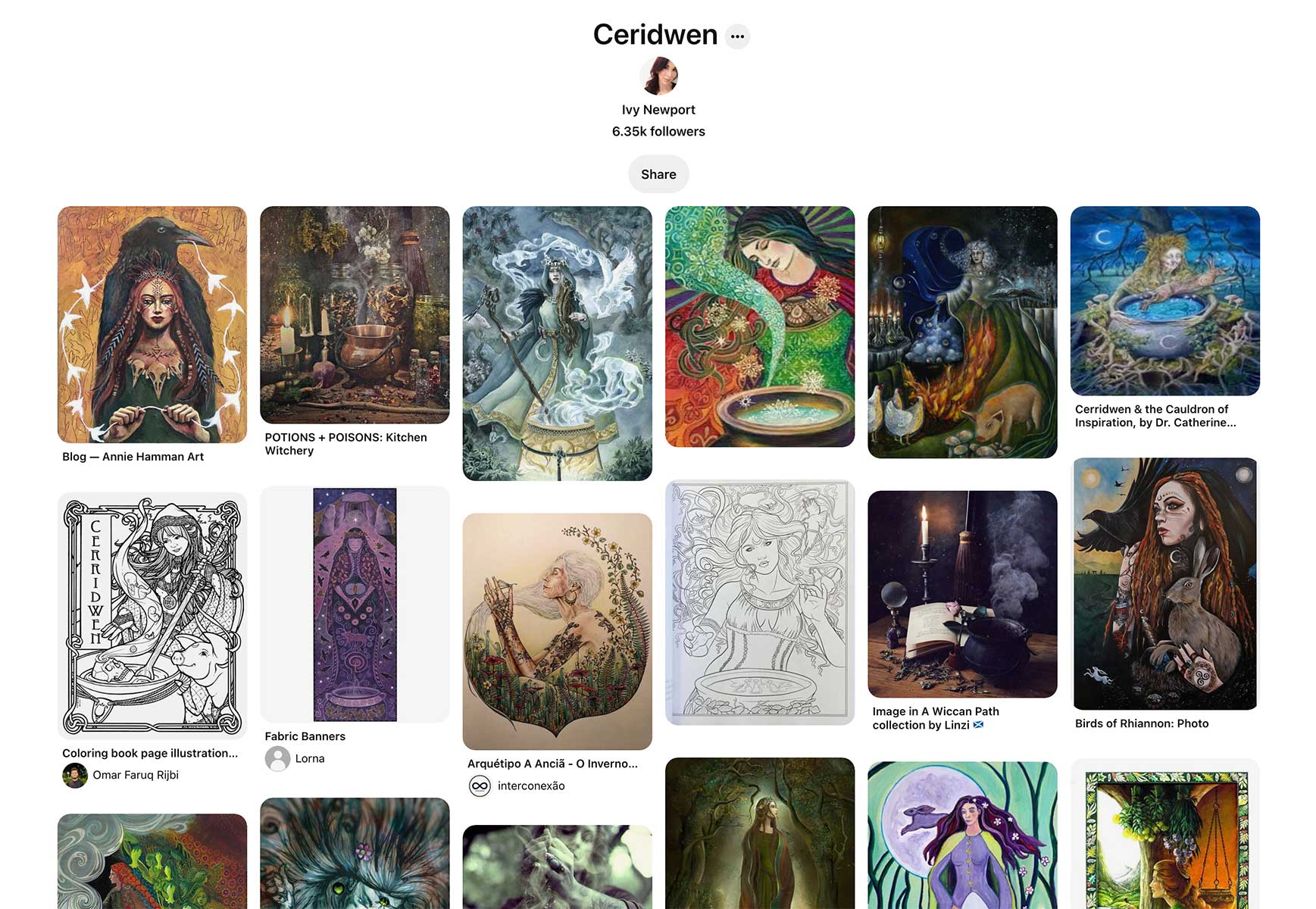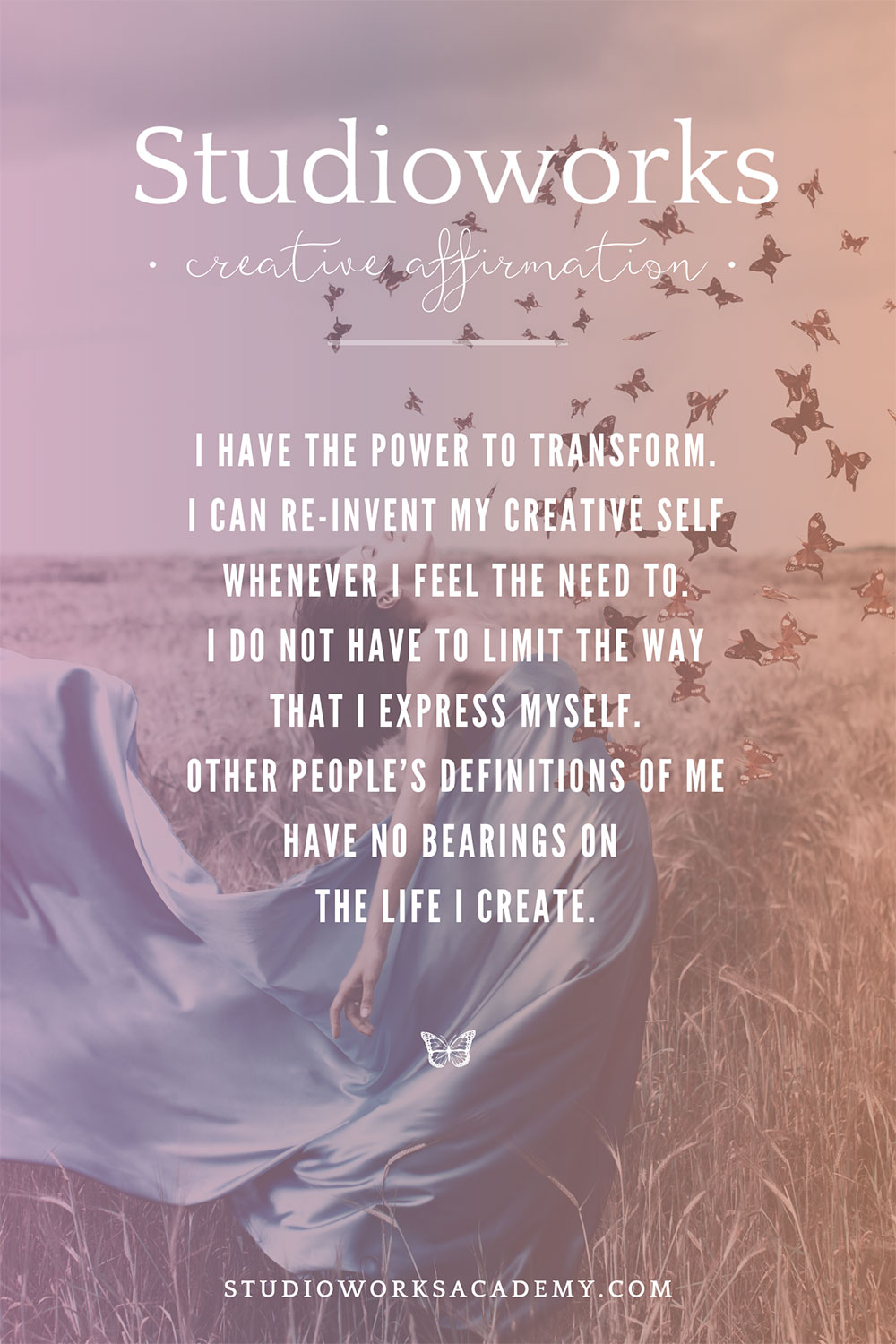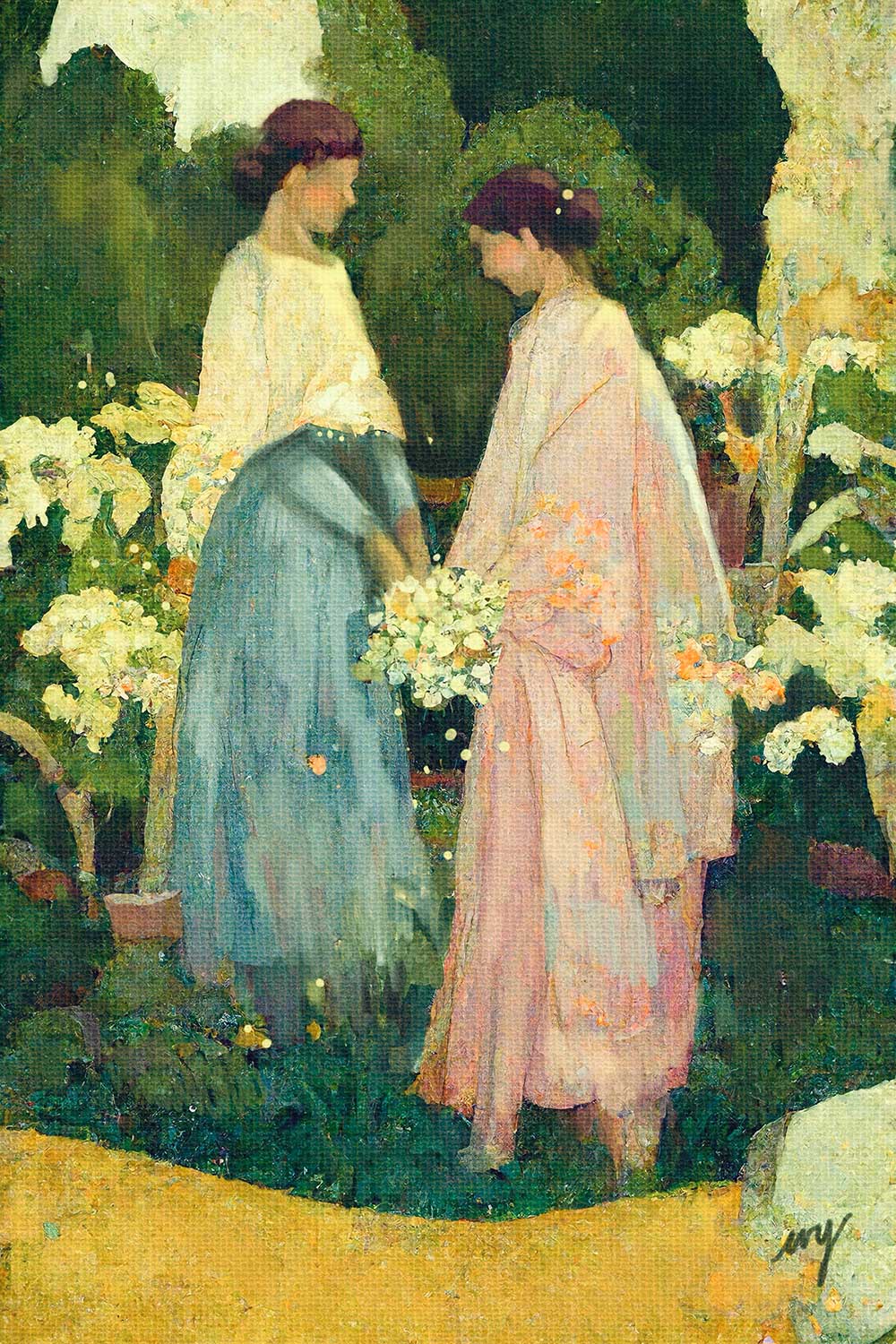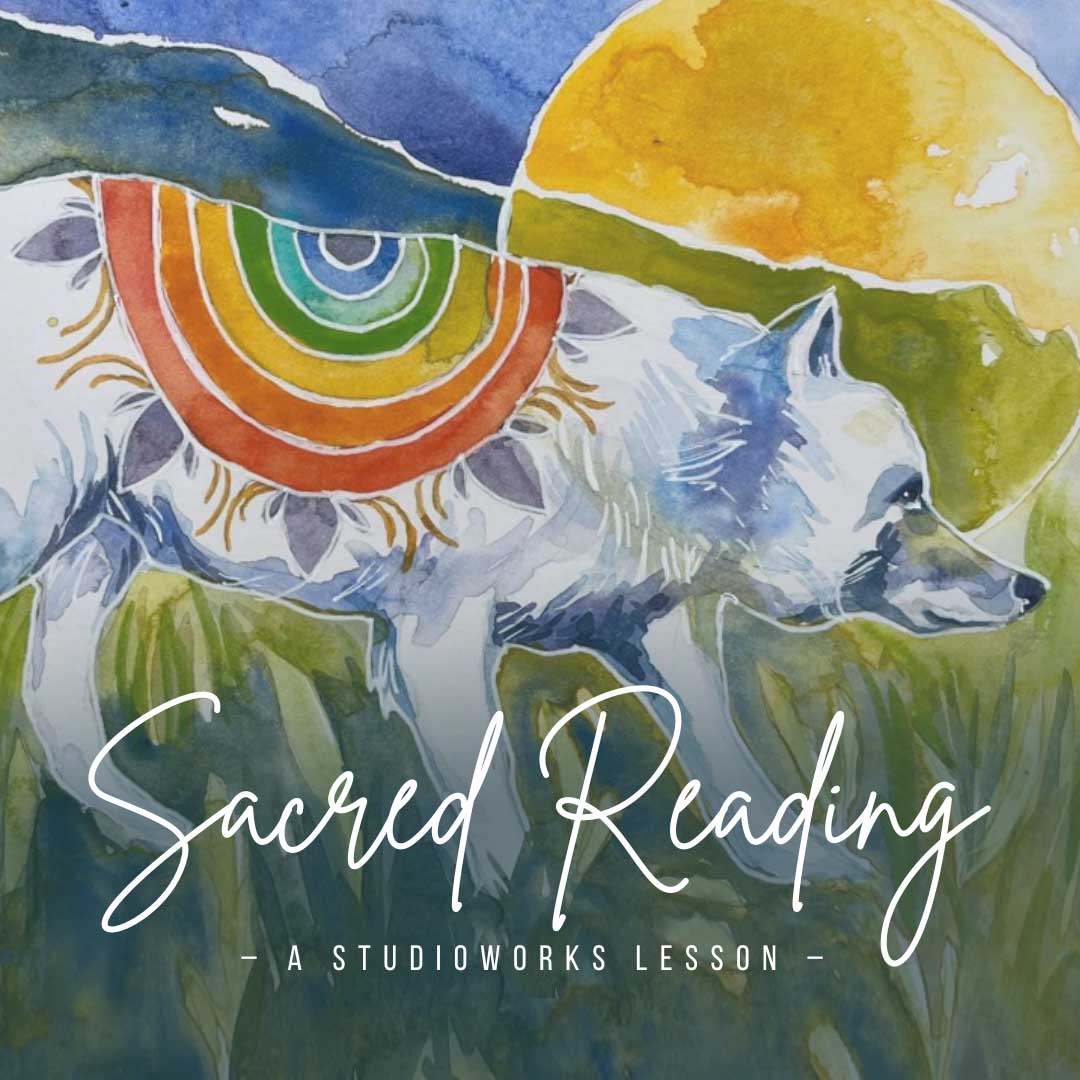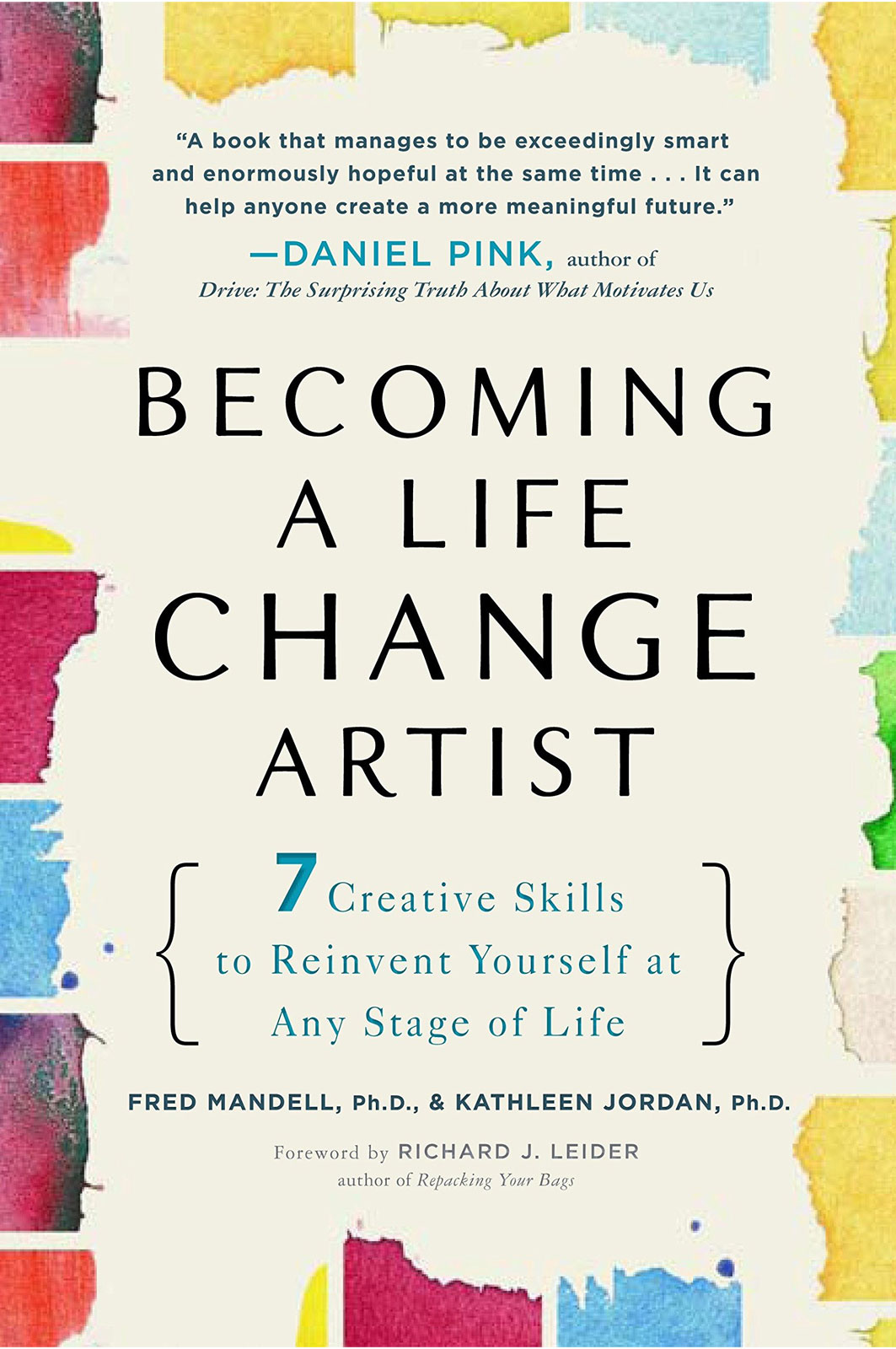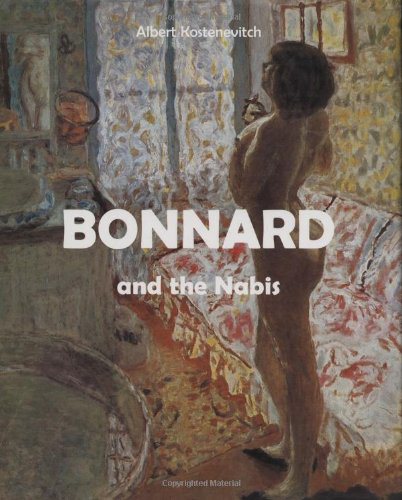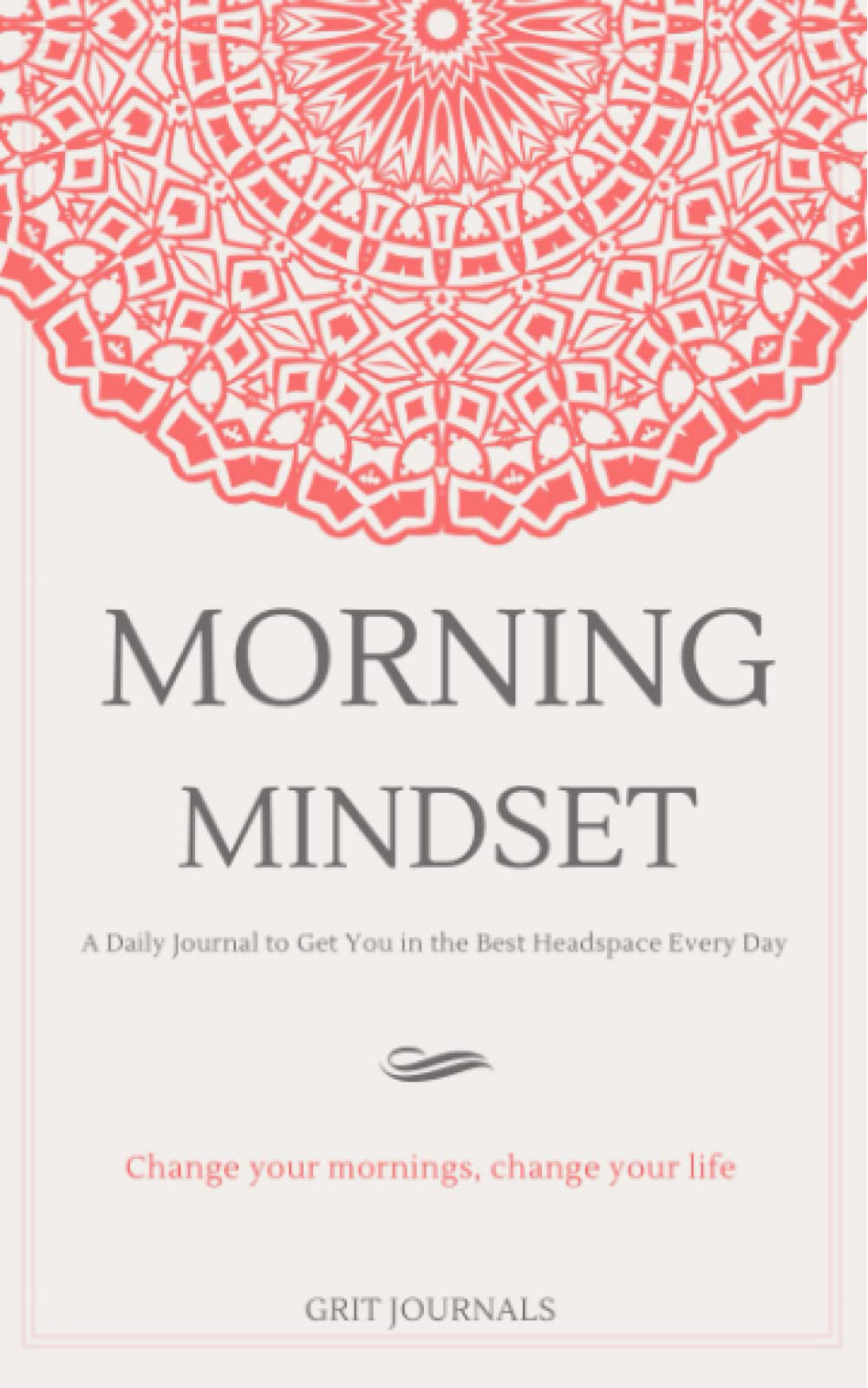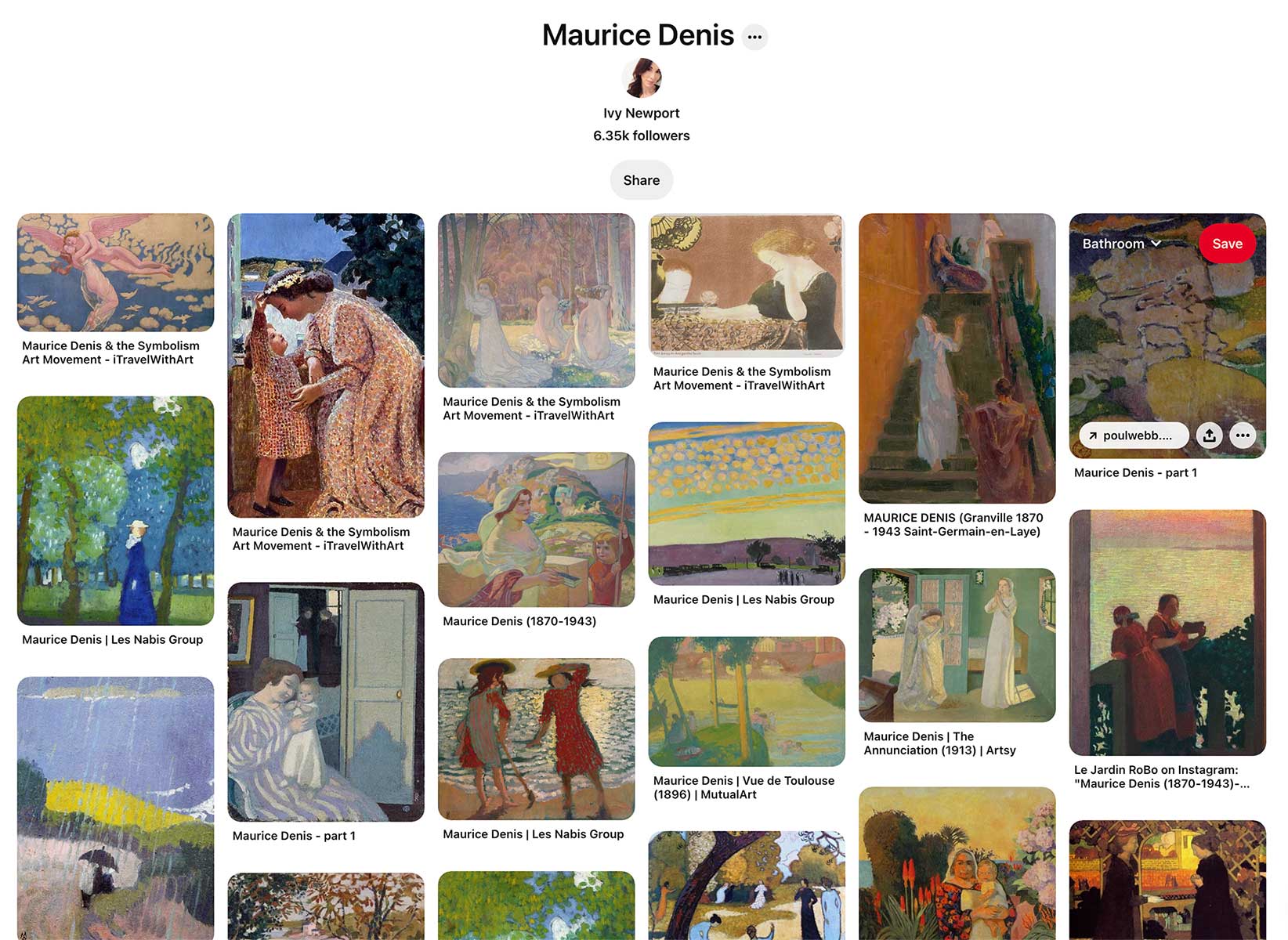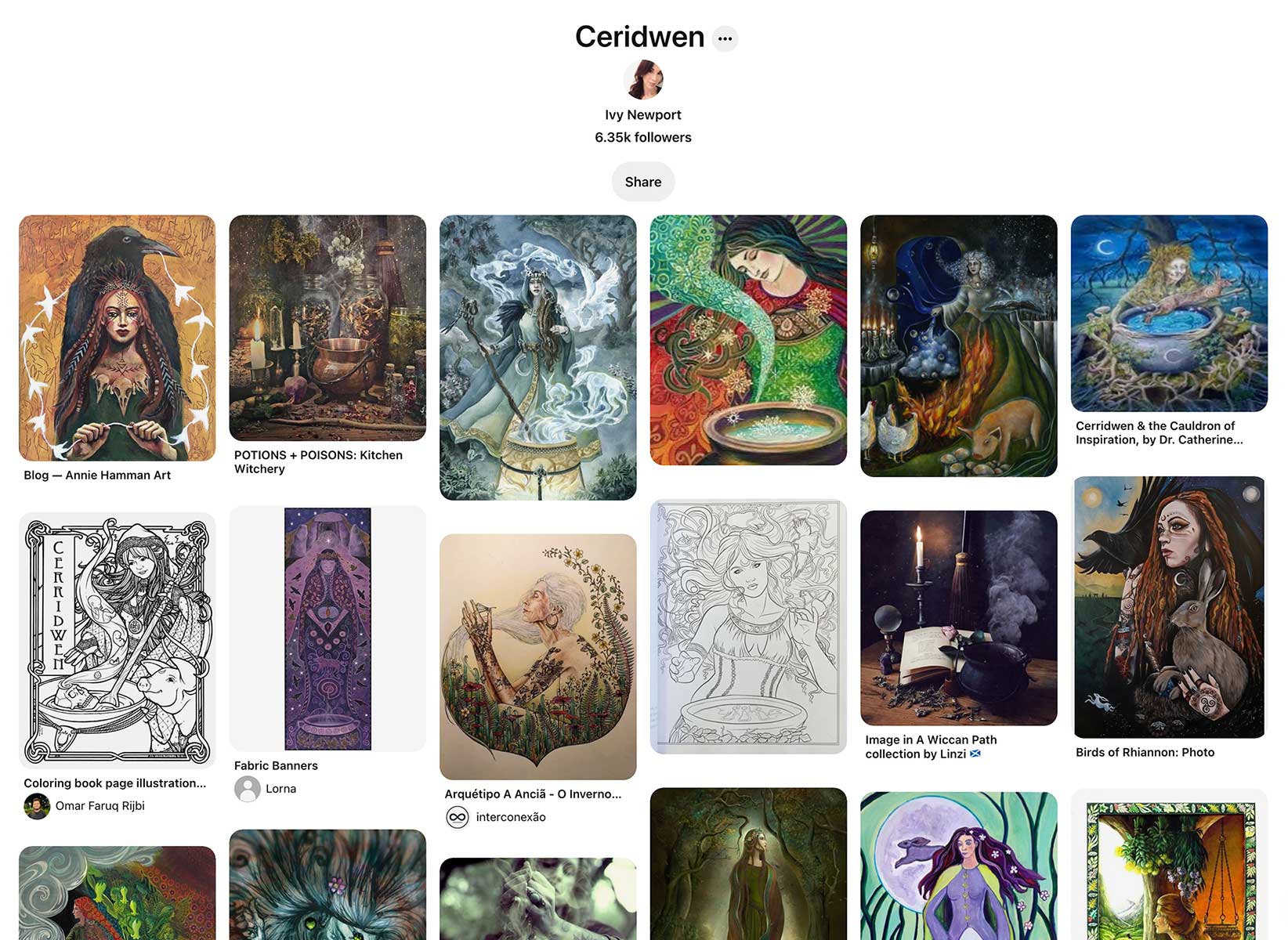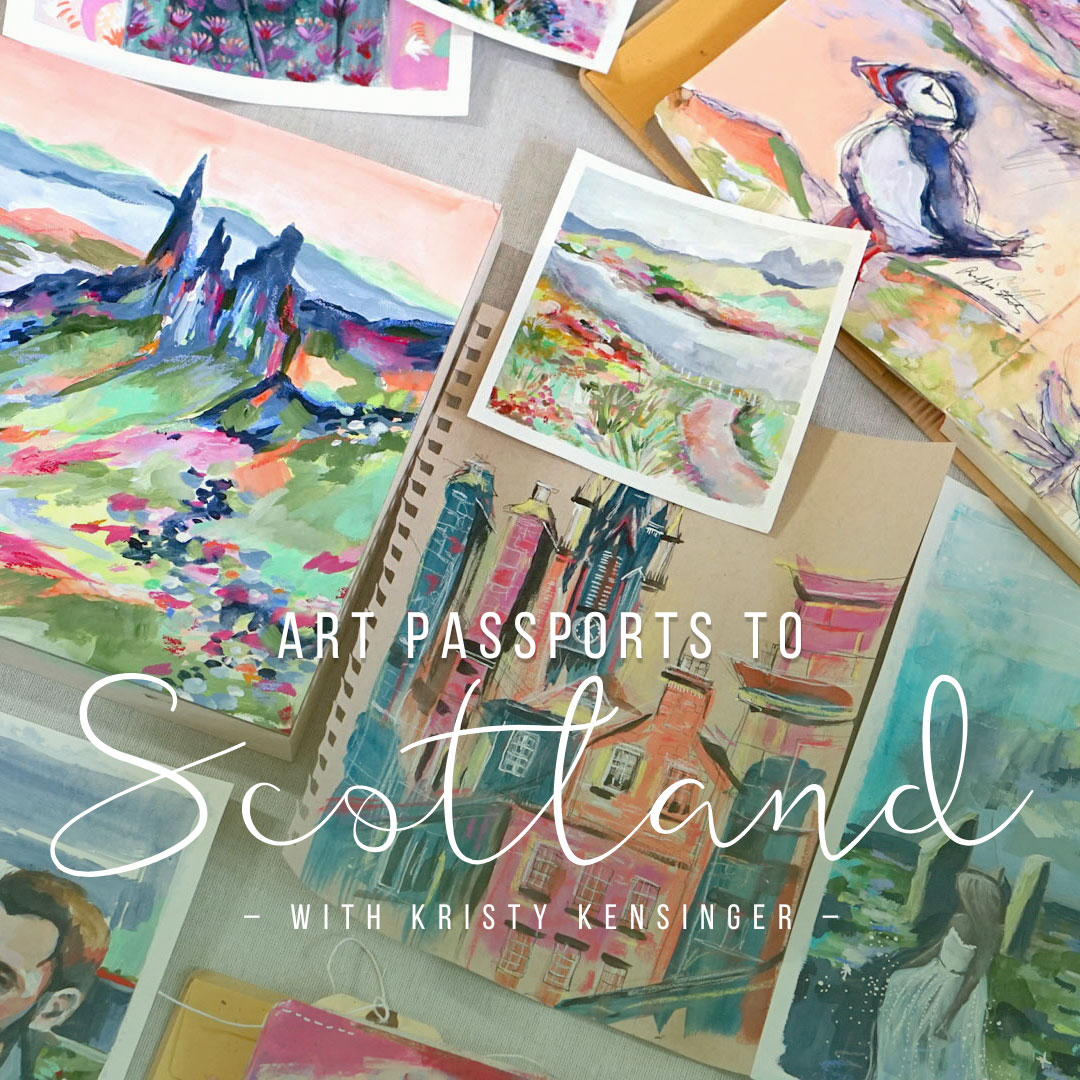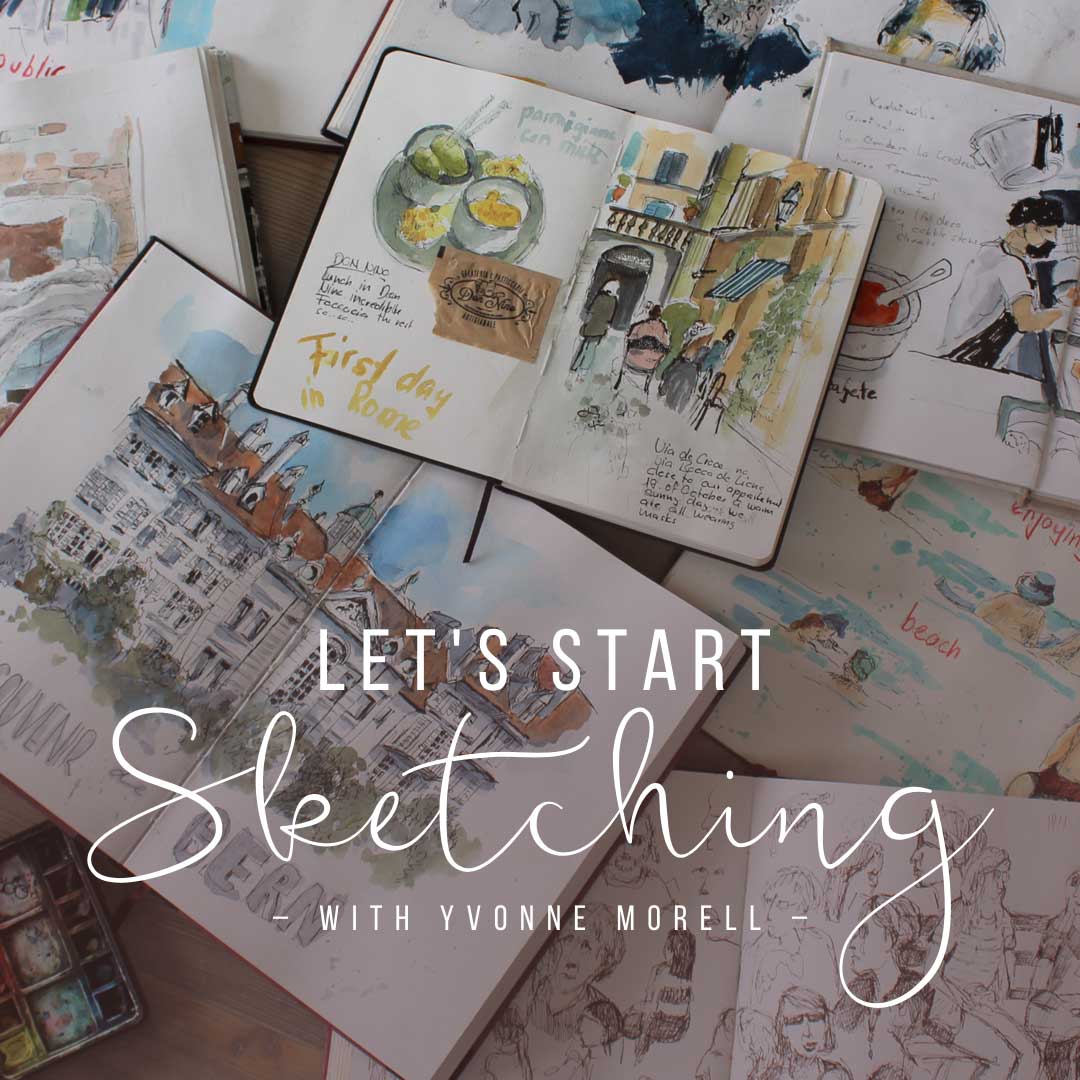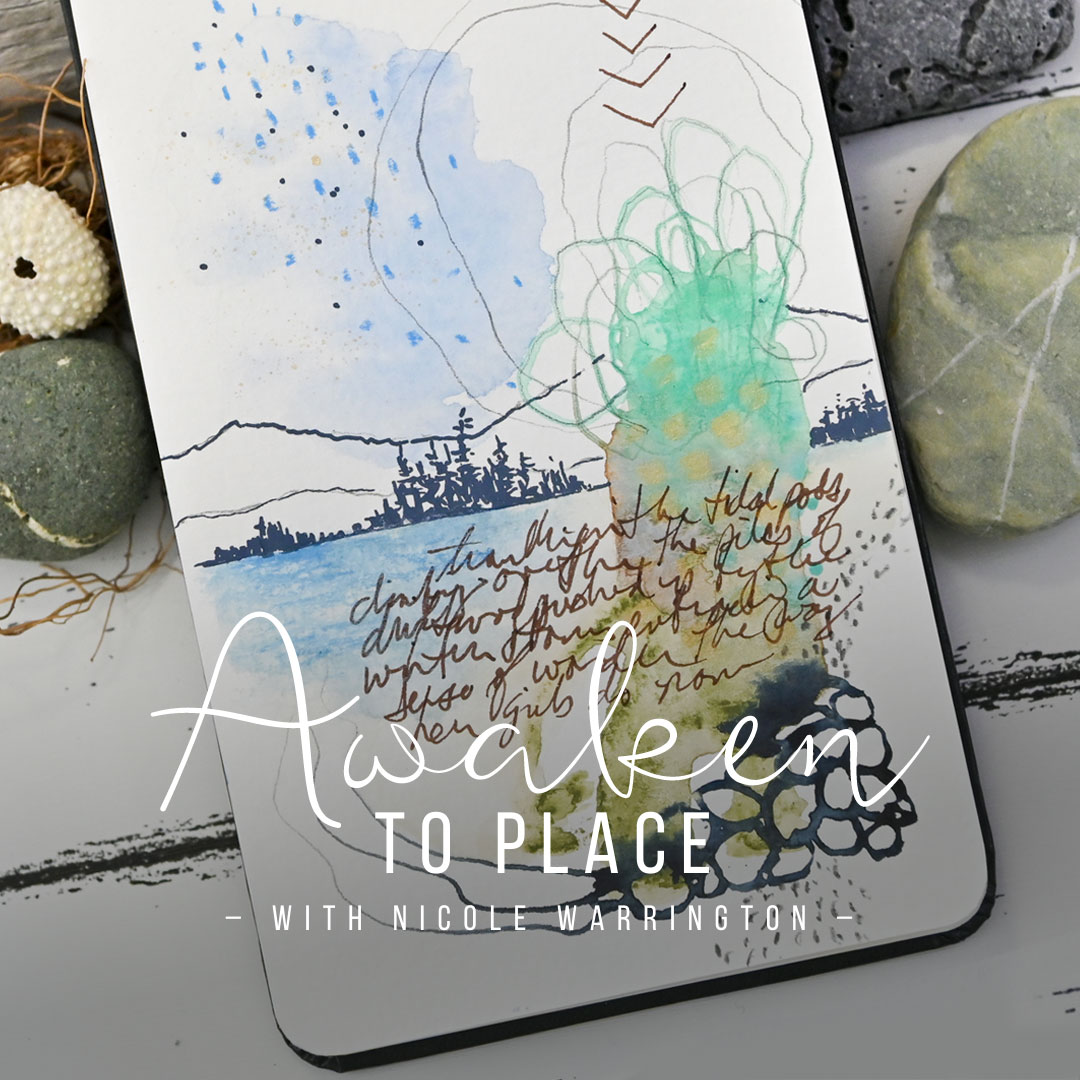IVY NEWPORT
Studioworks
Journal
a letter from ivy
Dear creative friends,
Welcome to Issue No. 45 of the Studioworks Journal! As always, I’m delighted you are here with me and I’m excited to share this with you. This month, I want us to explore the concepts of creative reset and re-invention.
Let’s face it, life is busy and filled with interruptions and change. To resist these, is to only make the process of creative living more challenging – so instead what might we do? When we go through a shift, come home from a trip, move or enter a new chapter in our lives, many times our “old” way of being just don’t quite work anymore!
This is when we have the opportunity to change our perspective, re-set our goals and perhaps, even re-invent our creative process! This can be both exciting and daunting right? However, the alternative is to stay rooted to what is no longer serving us. This is when we get to choose to evolve, to transform and to reconnect with our creative flow and energy.
So let’s explore this together!
xo,

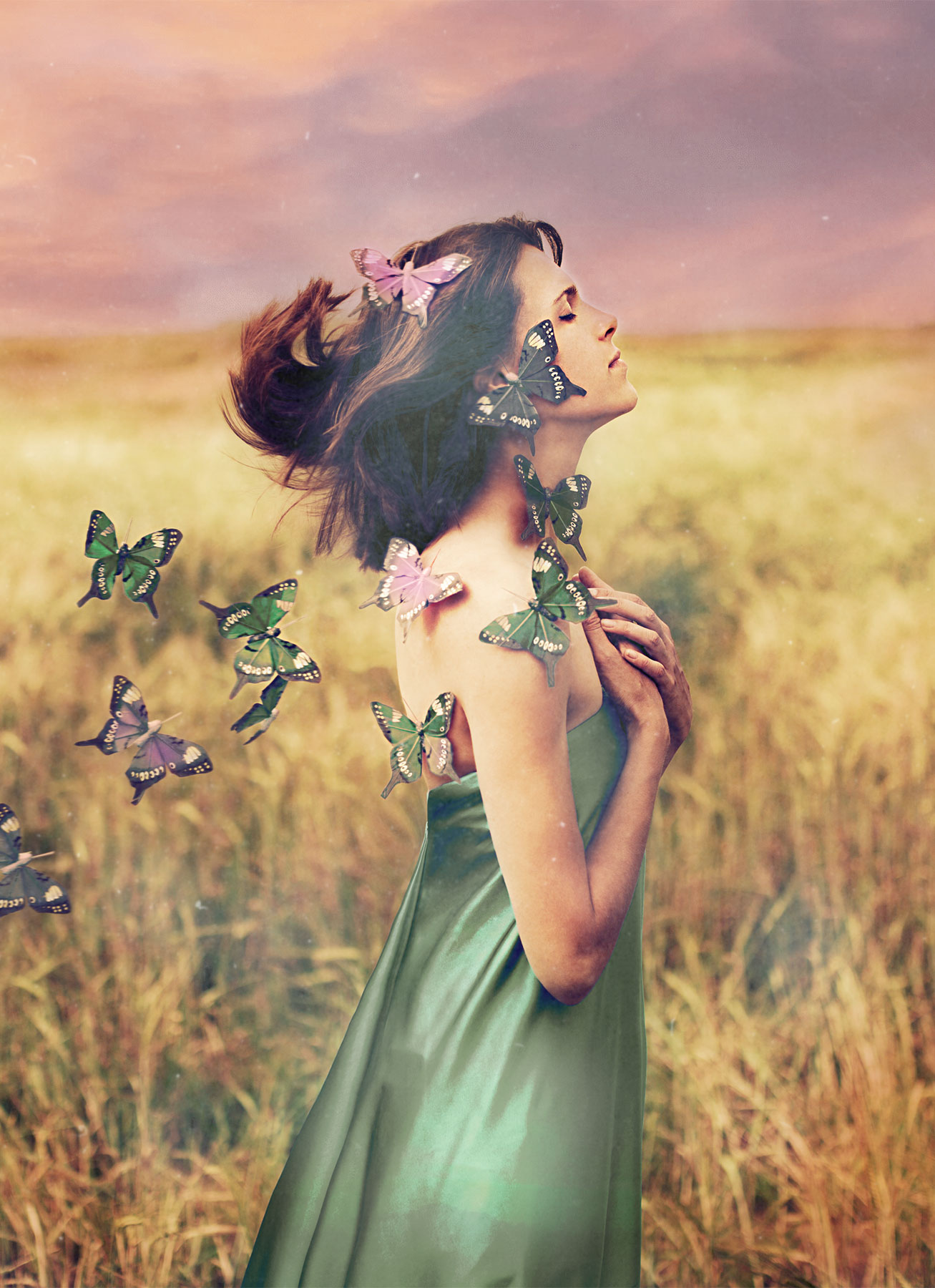
Each issue will invite you to explore your creative practice in whichever way works for you. Experience each issue at your own pace. Take what resonates with you and put the rest aside for another time.
Grab a cup of something lovely and dive in.
in this issue…
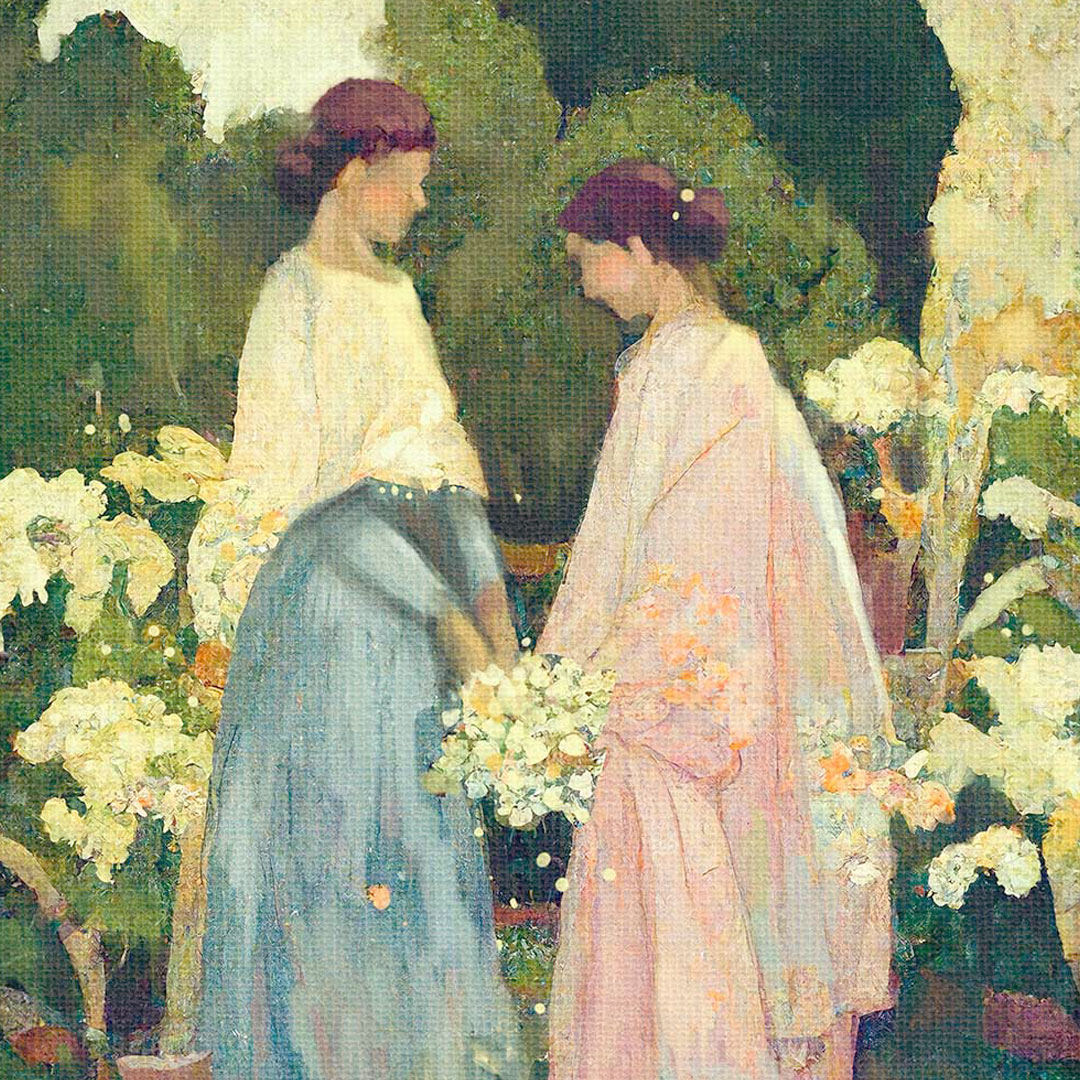
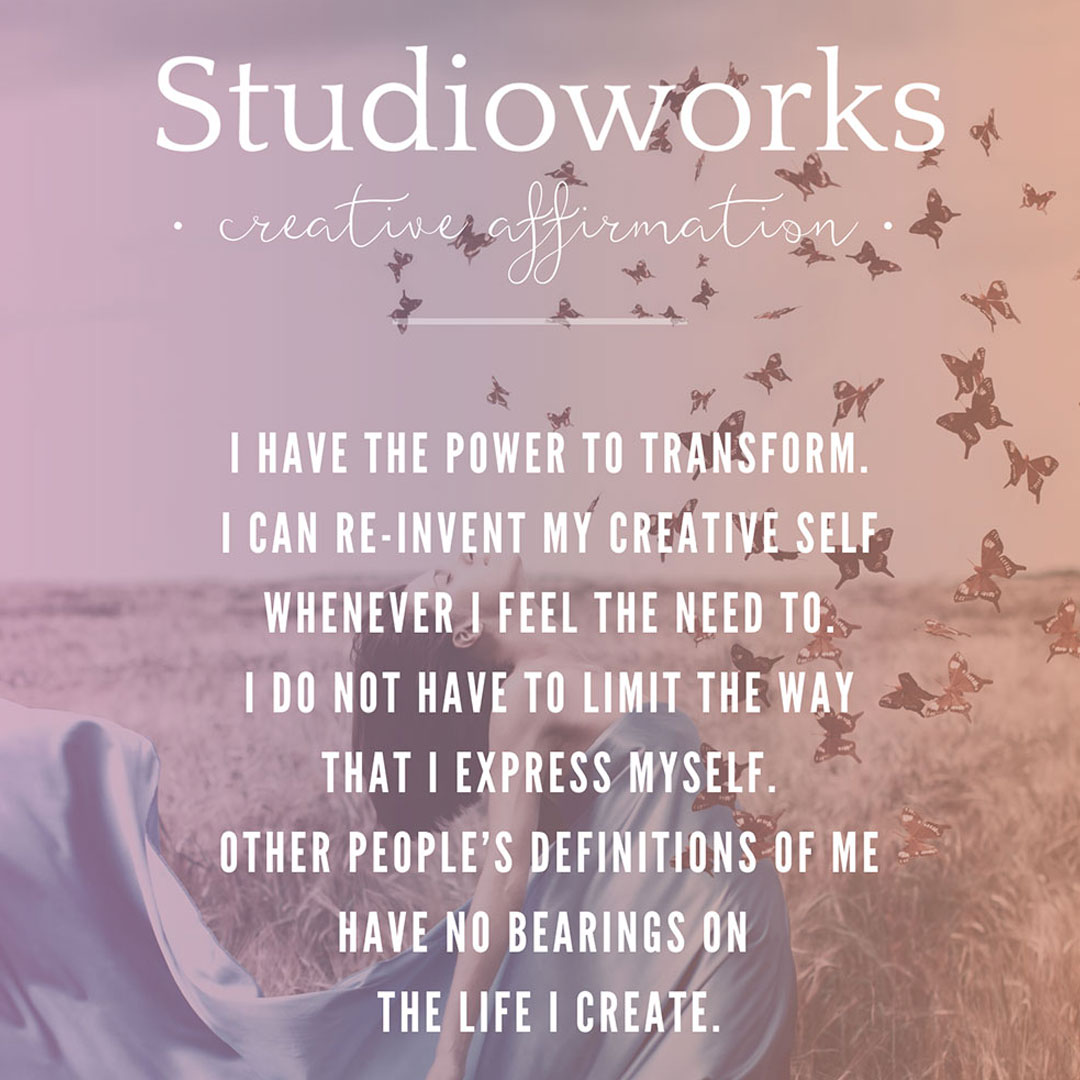
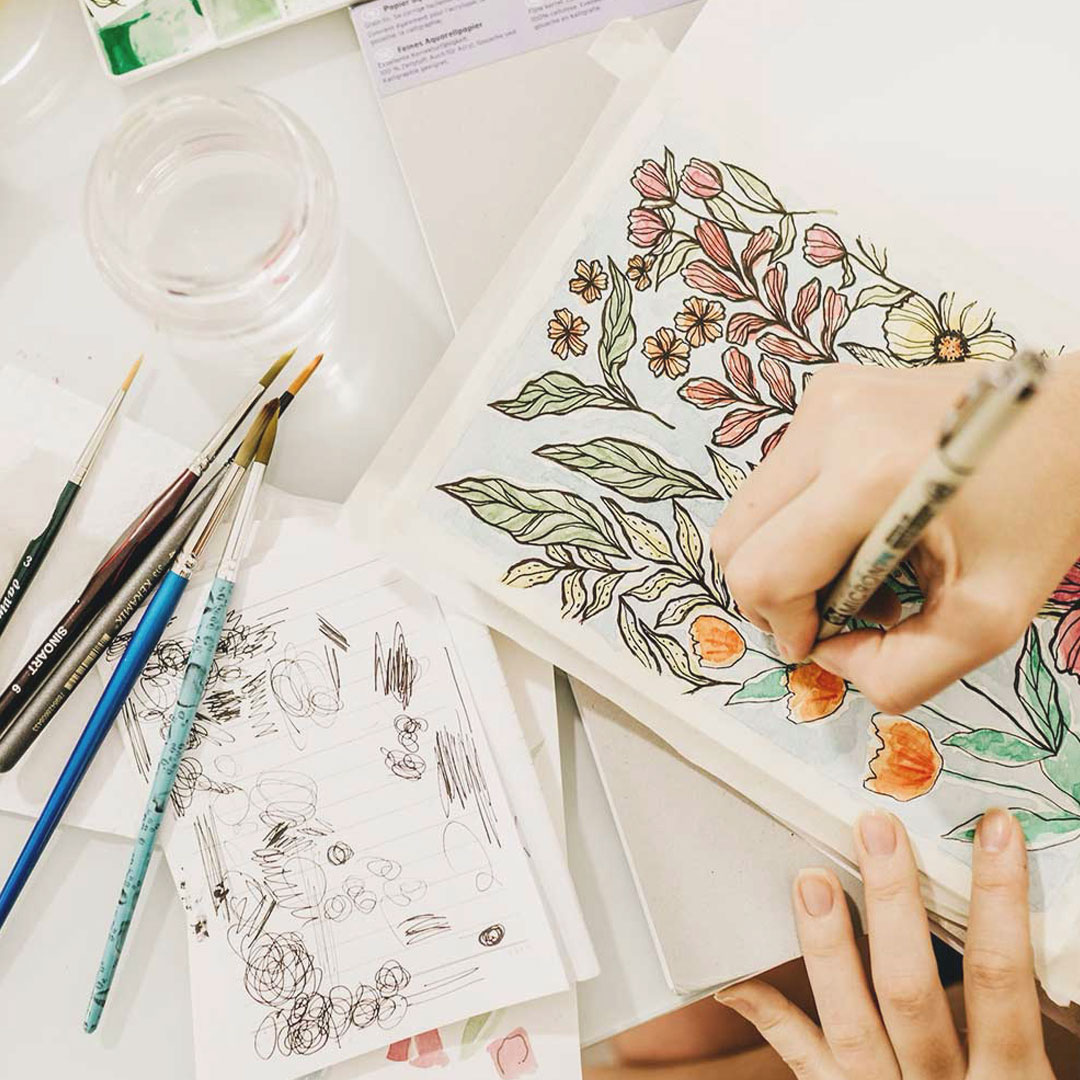
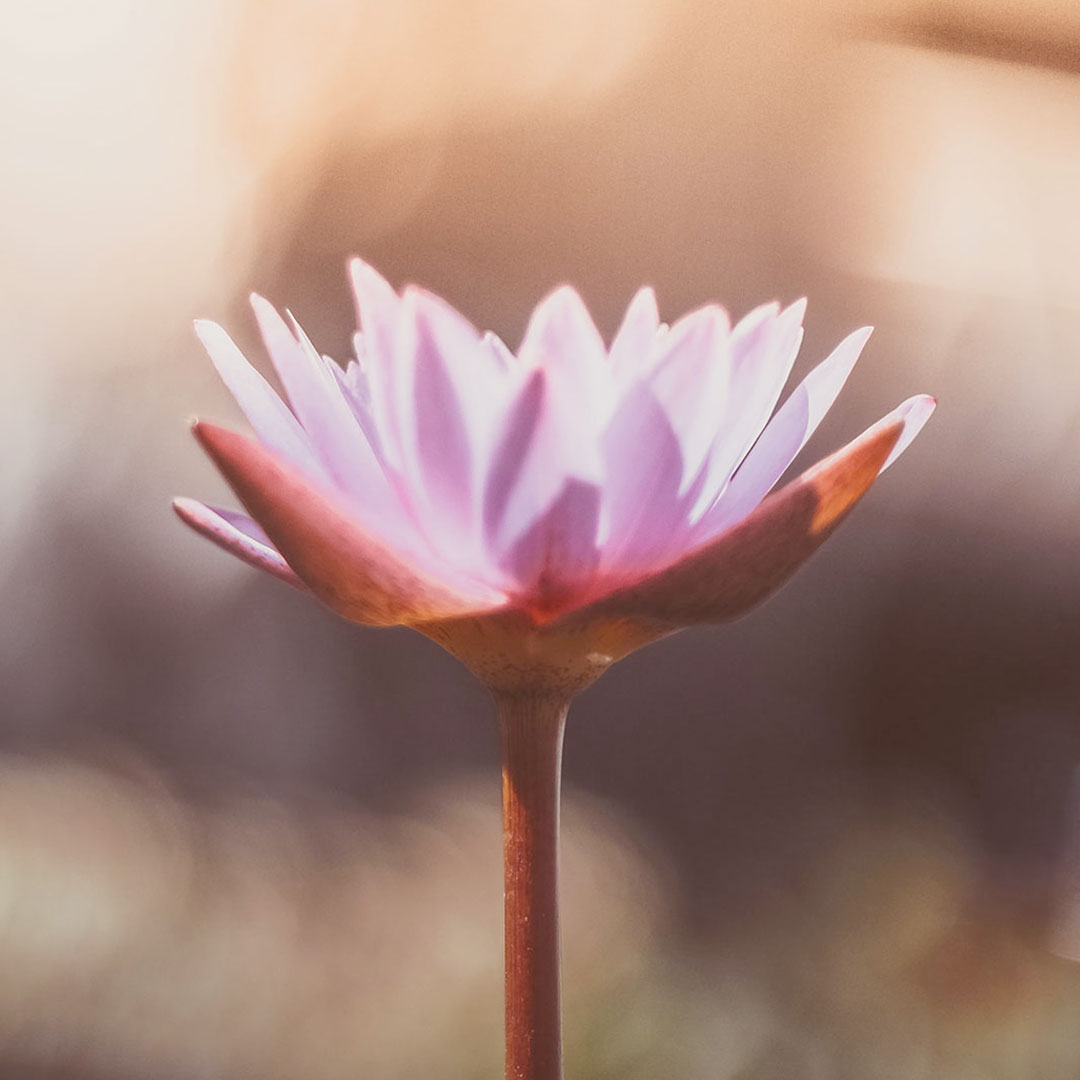
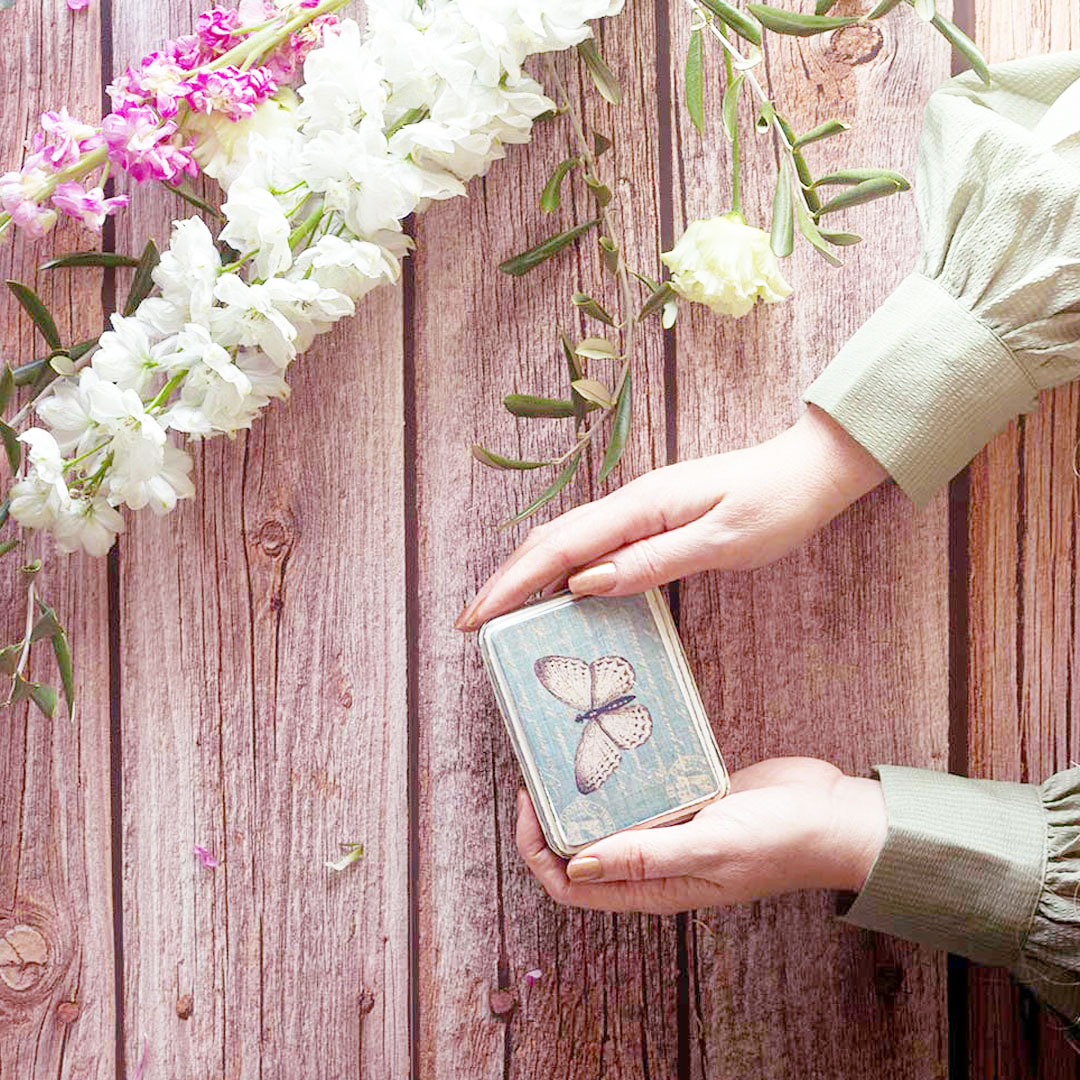
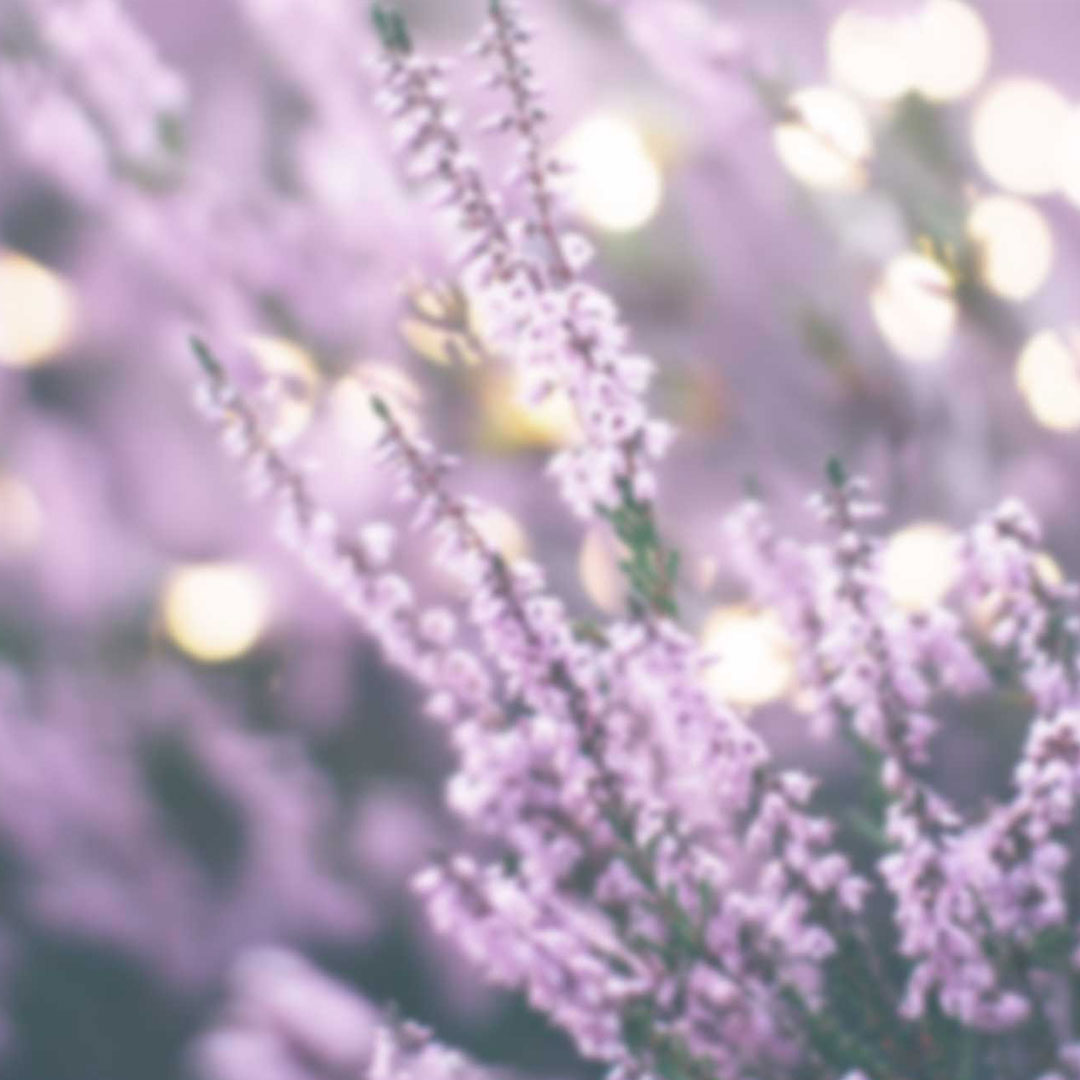
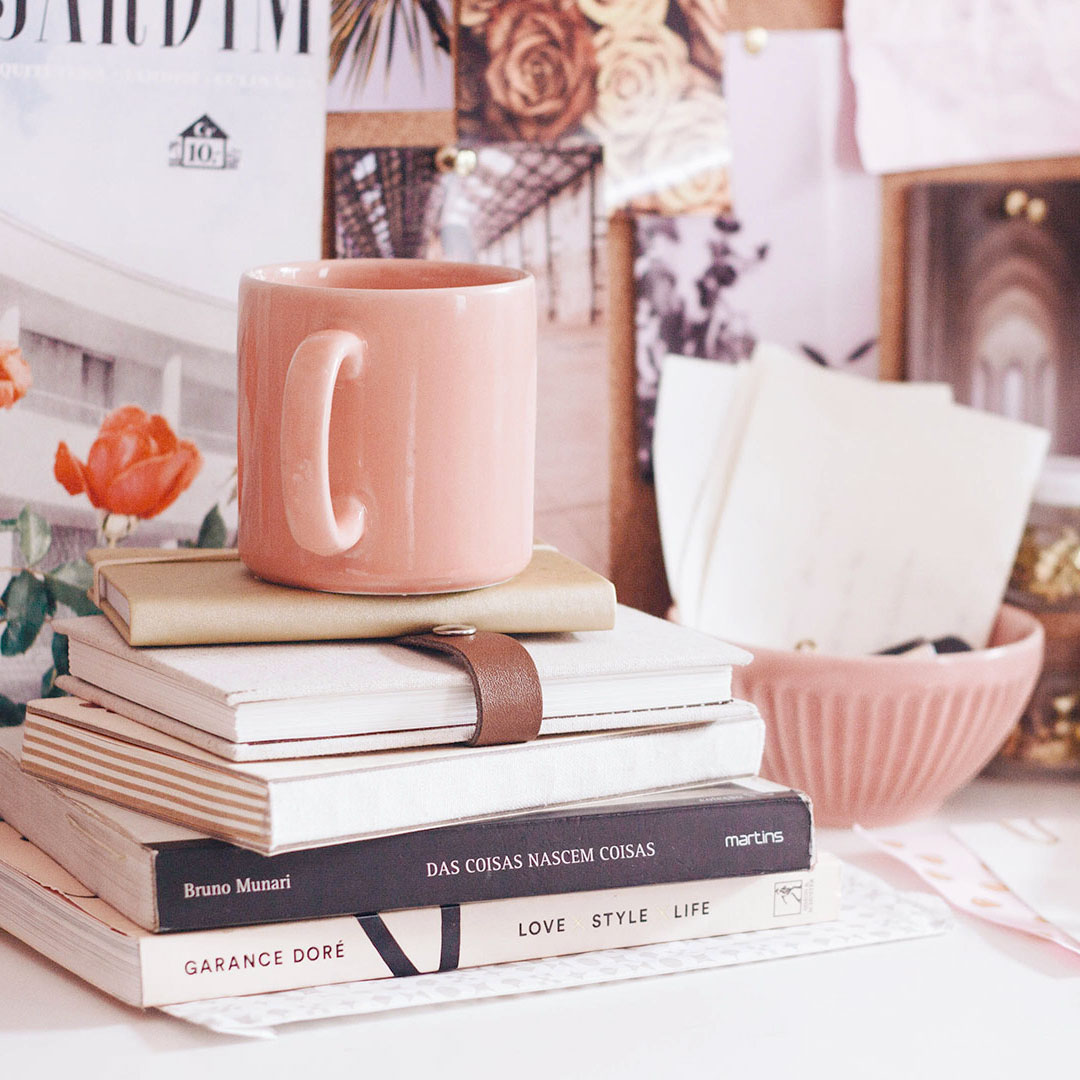
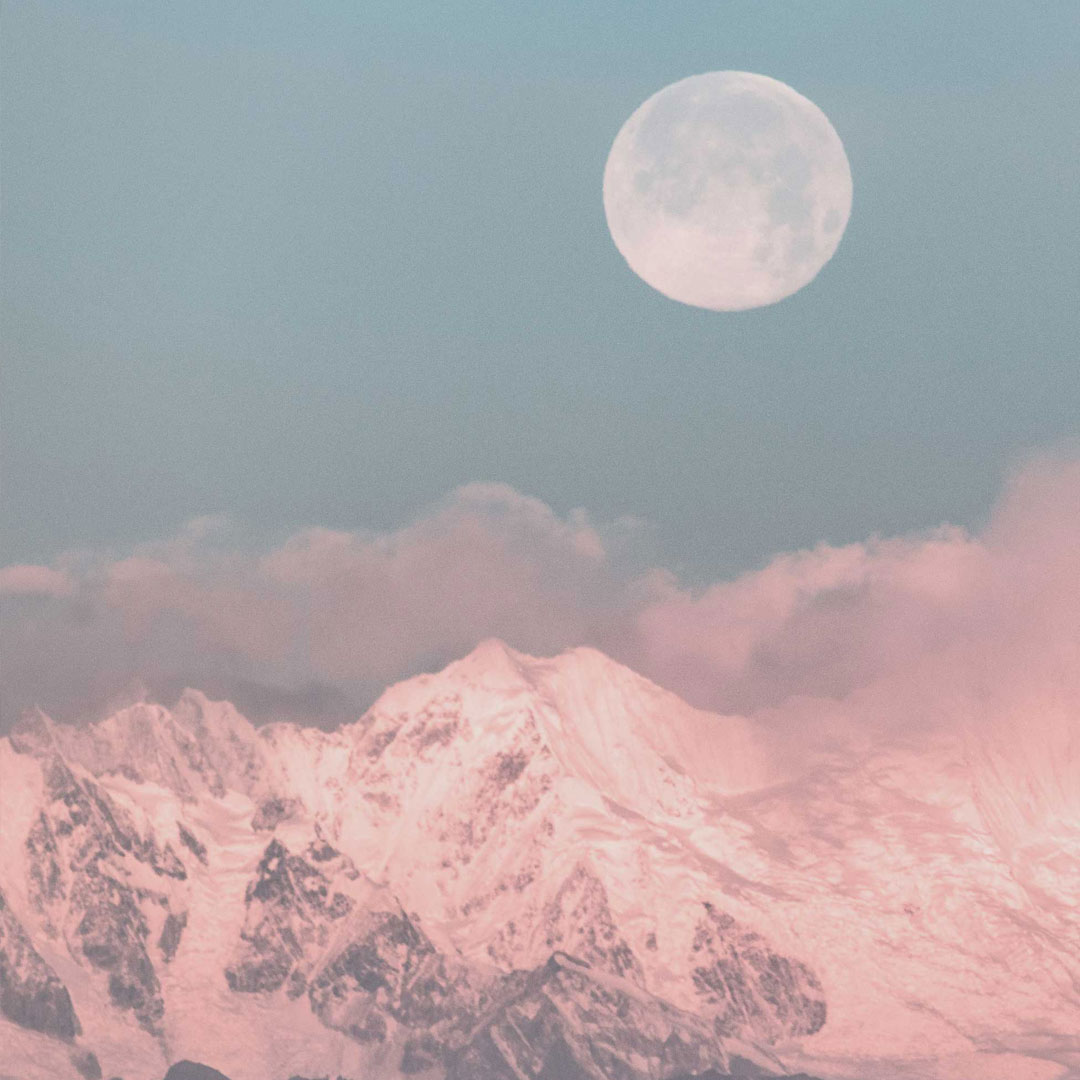
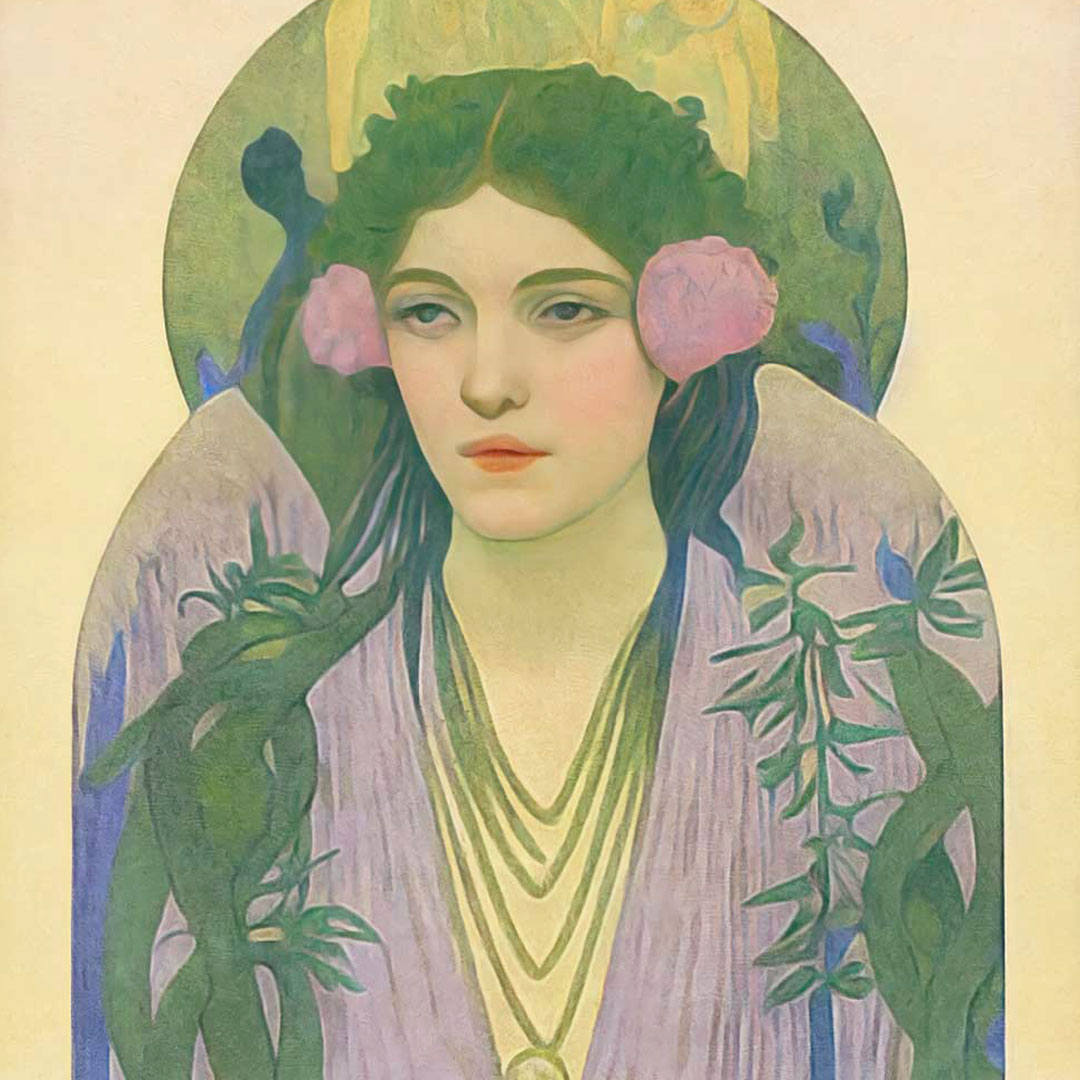
MONTHLY THEME
Creativity Interrupted: How to Reset When Life Derails Us
Sometimes it feels like everything in life is conspiring to derail our creative process. Just as we sit down to write, someone walks in with a tale of woe that can’t be ignored. We’re finally picking up the paintbrush, and a dear friend calls up out of the blue. At long last, we’re taking that dream vacation, but all the art time we planned gets sidelined by the wonder of the newness surrounding us and the unbelievable rapidity with which the hours fly away.
It’s tempting to feel frustration, or even guilt when we don’t get to devote ourselves properly to our passion. Hell, even if it isn’t a bonafide-I’ll willingly bleed for this- passion, but more of a hobby, not getting to focus on it can be maddening. It can evoke fears that we’ll never regain momentum or that our creative muse has left us for good.
Fear not. This is simply untrue. Each of us is imbued with a personal spark that yearns to move from timid fire to enduring flame. If we’re lucky enough to have discovered the channels through which this naturally unfolds, that’s amazing. However, if that’s not fully the case, and creativity tends to come in fits and starts, there’s no reason to despair. There are many tools we can use to reset when life derails us. Let’s explore a couple now…
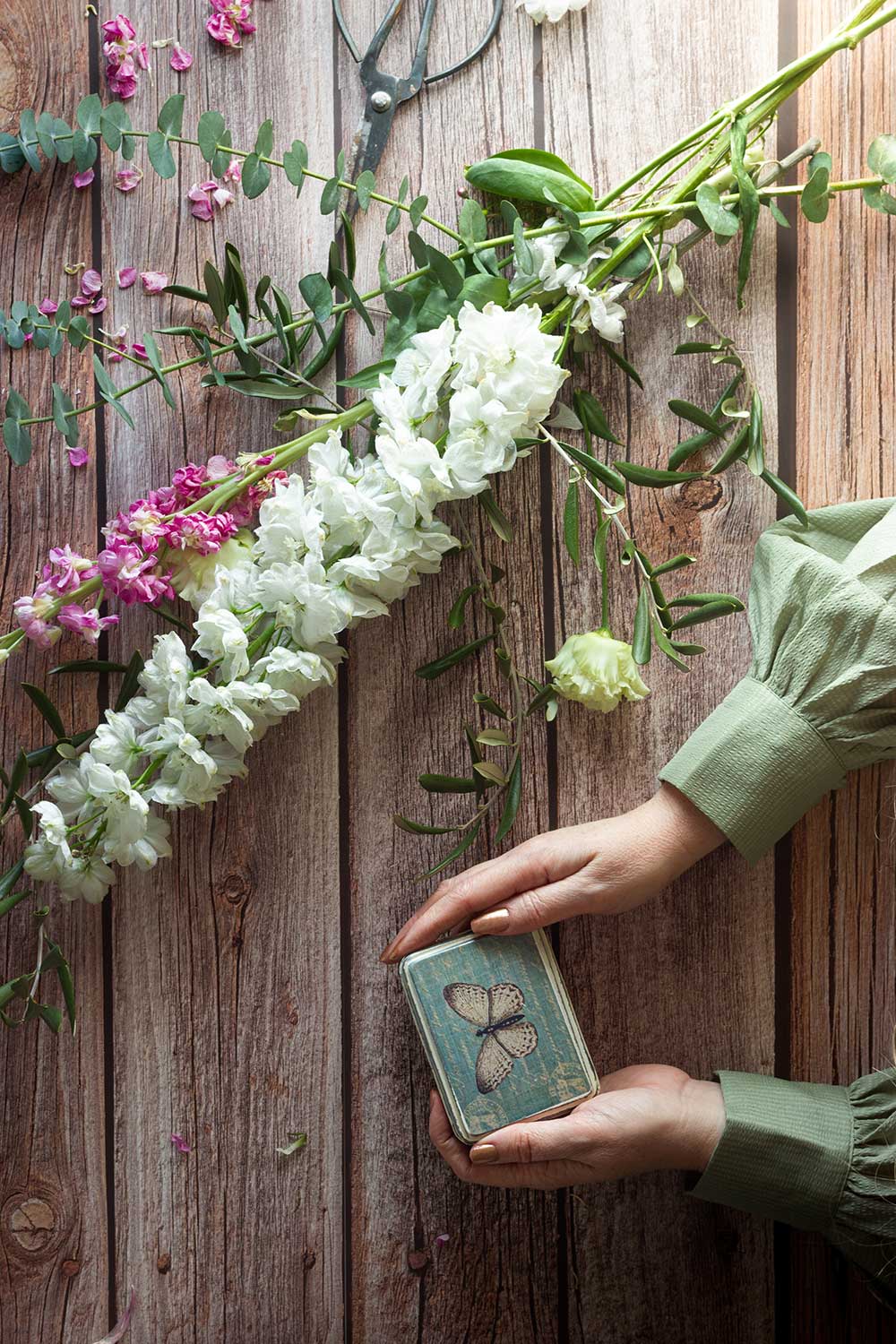
Embrace Life’s Cycles
One of the few constants in life is change. The world keeps spinning, and with each revolution, there are new triumphs and woes, births and deaths, springs and autumns. Creativity isn’t exempt from this process, and often it is the time spent away from our art that cultivates the soil from which fresh ideas can bloom.
This cycle is analogous to the metamorphosis that occurs between egg, larva, chrysalis, and butterfly. Each stage looks nothing like the rest and yet is vital for maturation to occur. Within the chrysalis, a particularly potent moment of change takes place which entails complete enzymatic breakdown of the former self, liquification, and finally, total reformation leading to emergence.
Framing the artist’s path in this way fosters an attitude of acceptance and takes us beyond a willingness to an enthusiastic eagerness to see what each stage will offer. When we refrain from fighting to control everything and embrace things as they are, we encourage our creative selves to feel safe to emerge, and in so doing, we enjoy ourselves and the process so much more.
Beware The Shade Of Glasses You Wear
Scientists and gurus agree that perspective is essential. From a neurological perspective, all of our life experience occurs for us within the envelope of our bodies. Once information is collected from the world, it then undergoes an interpretive process by our minds. Thus, in an experiential sense, we each inhabit a unique world colored by our personal history, biology, culture, etc.
For the guru, going inward and exploring the spiritual self generates the perspective that we are more than our bodies and minds paving the way for us to connect with all of life, feeling unified as a piece of creation. These views, among others, illustrate that what we think and feel about the world shapes how we see and experience it.
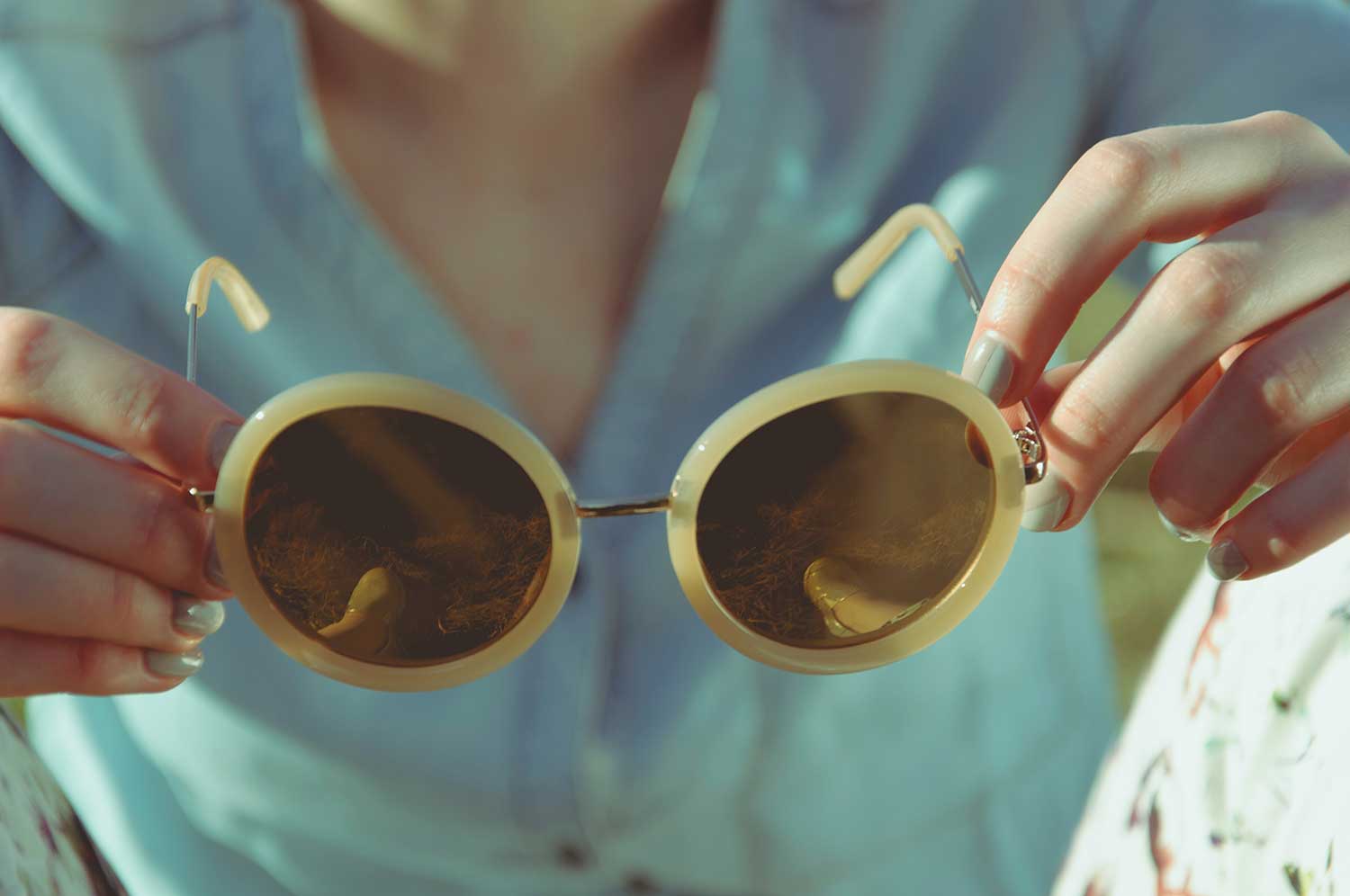
As artists, this provides a beautiful opportunity. If we take charge of the lenses through which we peer, things can look as rosy as we choose. For example, we might elect to view all facets of living as art, from cooking a sumptuous meal to cultivating a garden to crafting a cocktail, even caring for sick loved ones or navigating loss. Viewed this way, creativity is never truly interrupted it’s just flowing through different channels.
We can rest in the knowledge that we will not abandon what we cherish. When it comes to creating, we will always return to it. Especially when all we really have to do, to reset when life derails us, is adjust our perspective. Then we can recognize that our creativity has been with us all along, and it’s simply time to get back to work.
“We need to remember that we are created creative and can invent new scenarios as frequently as they are needed.”
– Maya Angelou
Creativity Interrupted: How to Reset When Life Derails Us
Creating Freedom: Turning Limitation Into Liberation
By Rachel Ruland
In this piece, Rachel shares about how she was forced to re-invent her creative practice when she found herself stranded in Spain during Covid. With limited resources and tons of creativity, she found a new way to make art…
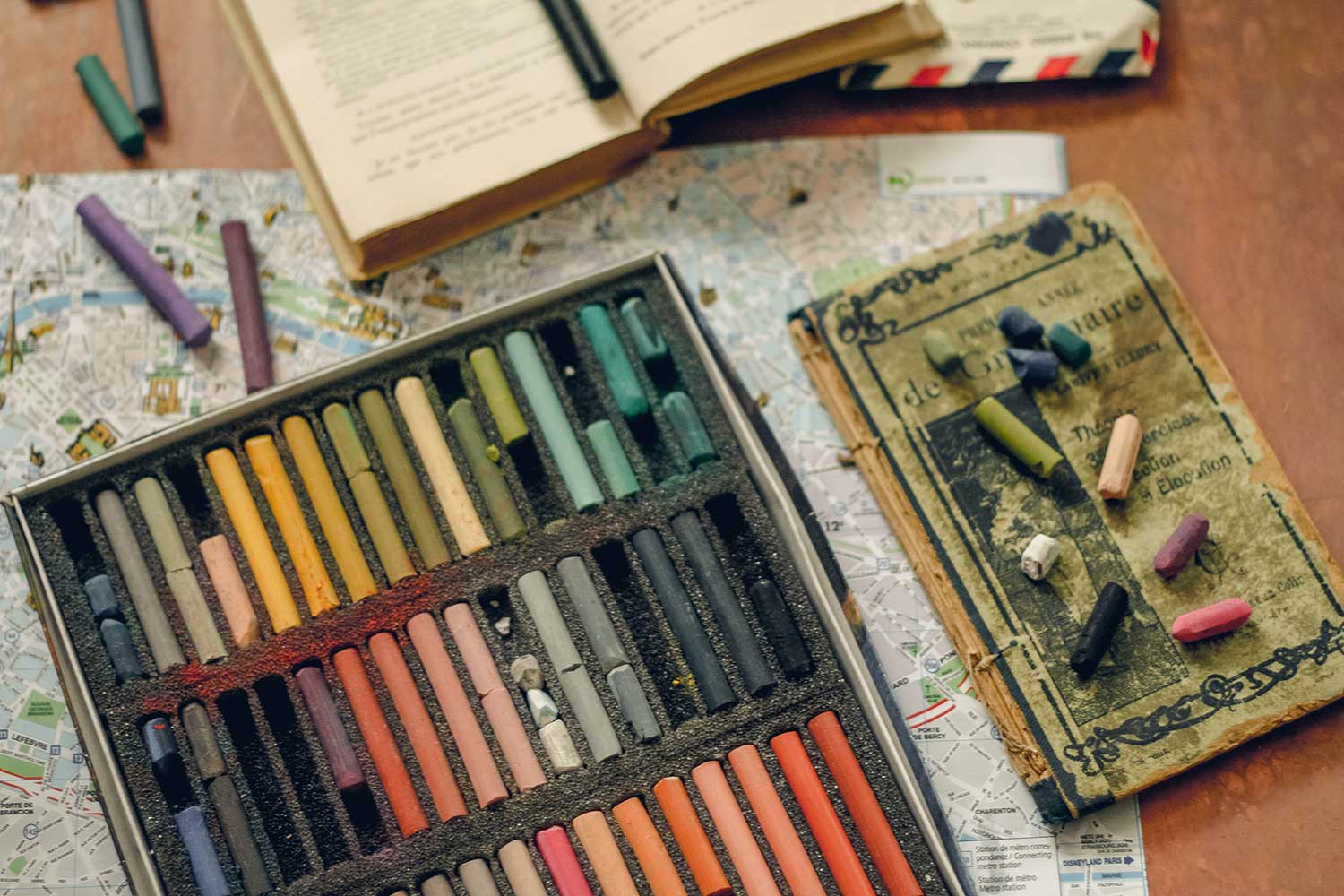
Life can be unpredictable. We all know this on an intellectual level. However, it’s a whole different thing when events beyond your control upend your plans and leave you stranded across the world amidst a pandemic. An experience of that nature reveals in sharp relief how little control we actually have.
When the ability to steer our personal vessel is stripped away, we still have choices. Are we going to kick and scream decrying the world as unfair, remain calm, and try to respond as the situation demands, or something in between?
I chose to breathe deep, reflect on my options, and try to make the least damaging decisions possible. Fortunately, my partner in crime followed my lead and we navigated a path to safety with far less stress than you might imagine.
So, what does all this have to do with the creative process? When you find yourself in a small city in southern Spain with all transportation shut down, prohibited from leaving your apartment except to carry out essential tasks (e.g. grocery shopping, pharmacy visit, walking a dog, etc.), and no clue of how long the situation will last, you have to get creative. Especially when you love to paint and find that it transports you beyond normal parameters of time and space, just the sort of thing you will need to get through a lockdown with some semblance of sanity intact.
Facing Limitation
It’s no use trying to pretend like situations aren’t challenging when they undeniably are. This is where reaching for perspective is invaluable. Once we’d established that we had a solid place to stay, were not sick, and our families were all doing fine (despite the ocean between us), it was time to feel gratitude for our good fortune and to get real about what we needed.
We asked our gracious host (formerly a cordial acquaintance, who became family via the pandemic crucible) if he could manage to get his hands on a guitar (for my source of domestic felicity) and some version of art supplies (for both of us). He took to the challenge with gusto, but it wasn’t a simple feat.
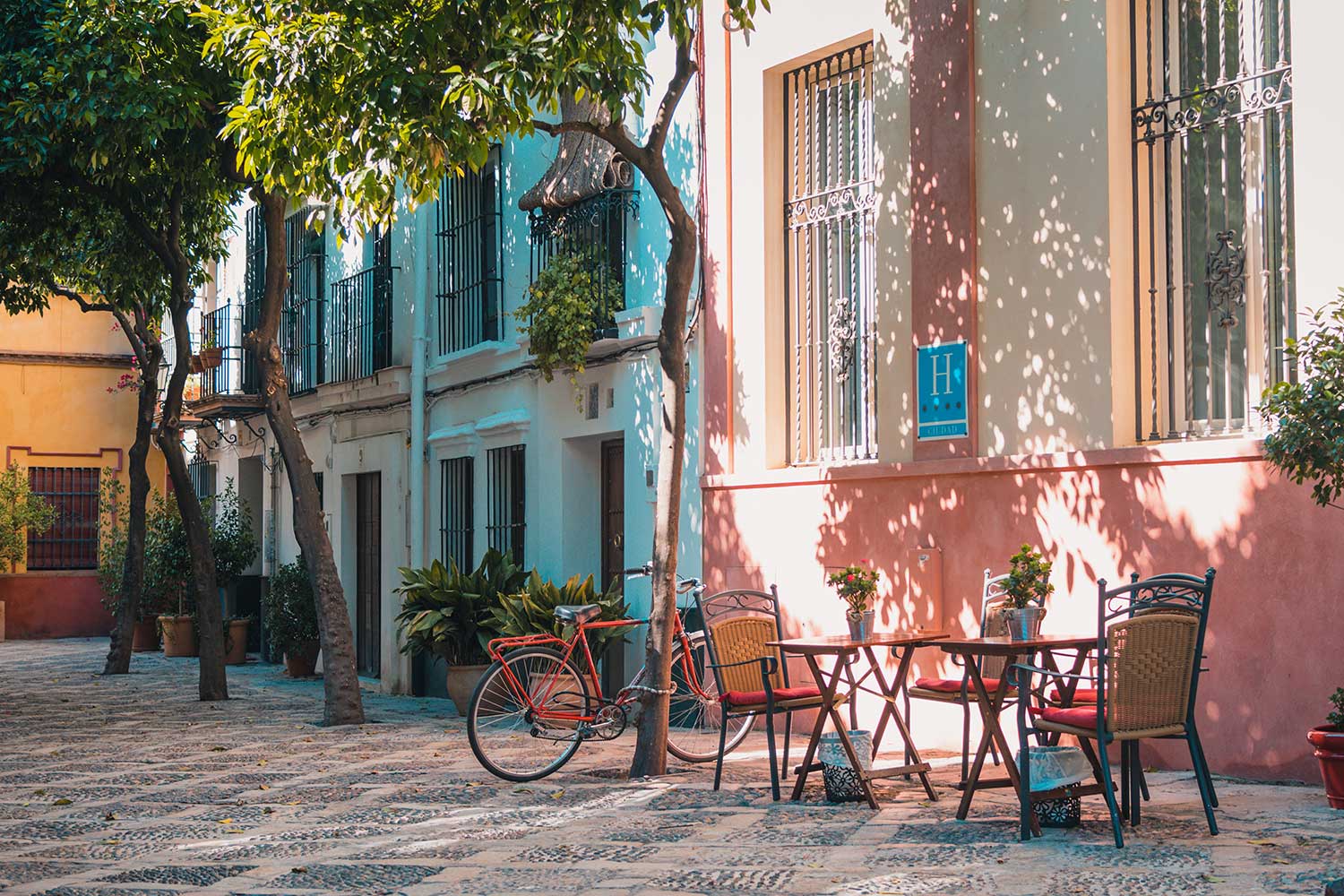
Walking around with art supplies, let alone a guitar, would be grounds for getting stopped by the Guardia, or the Policia. However, our co-conspirators used their ingenuity to contrive sneaky ways to make it happen, and within only a few days we had our hands on a beat-up old guitar, some well-used watercolors, paper, bits of soft pastel, and a single ungainly paintbrush.
Impressing me with his cleverness, my partner soon procured another paintbrush of sorts by purchasing a cheap make-up set. Now we were in business. Though our implements were crude, we had what we needed to start making art.
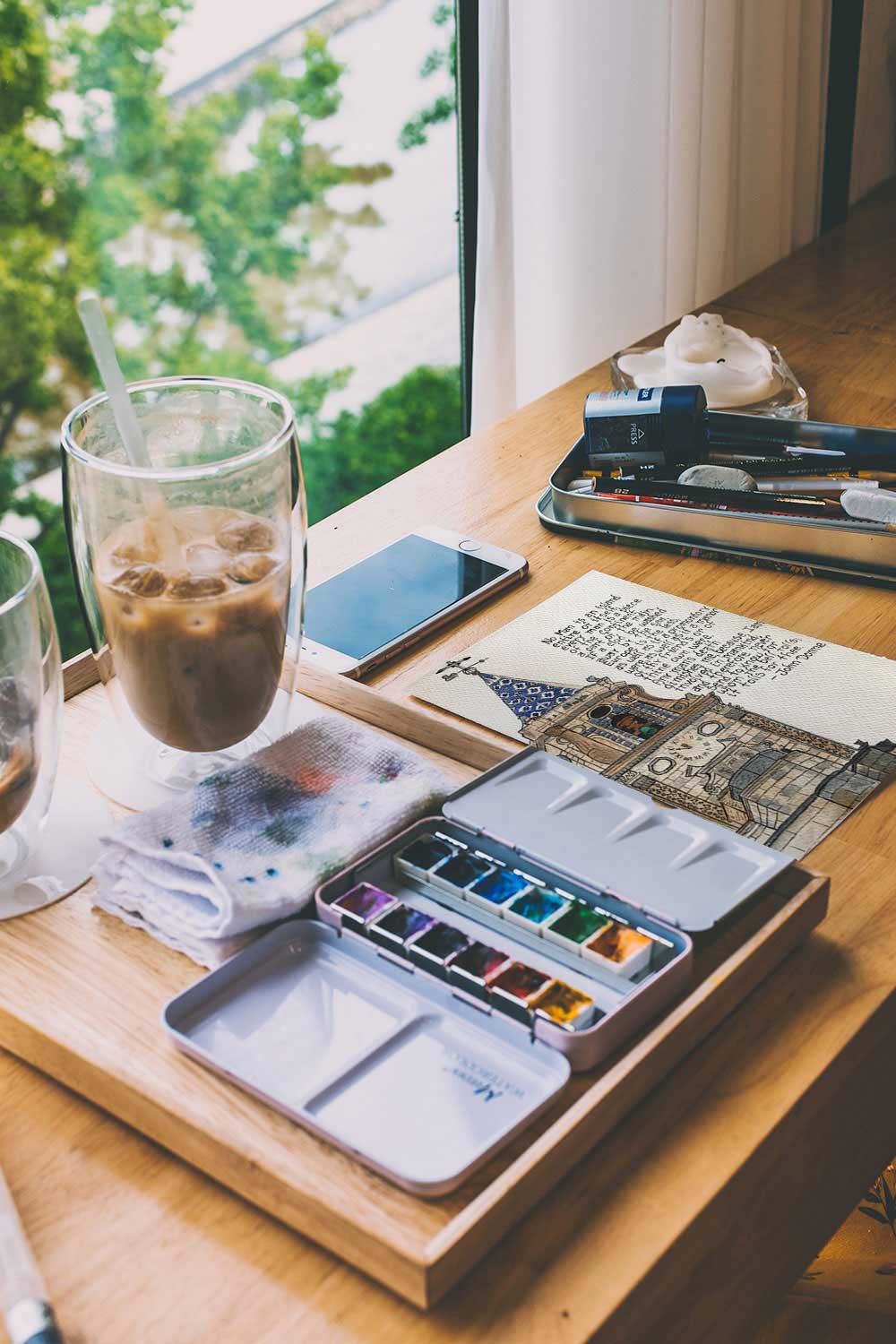
Finding Liberation
At first, it felt like everything I was trying to do was awkward, clumsy, and childlike. I acknowledged that even on my best day, with all the proper tools at my disposal, I wasn’t exactly a world-class painter. At that point, my tendency towards perfectionism (aka procrastination) could have completely derailed my efforts. I deliberately chose otherwise.
I decided to transform the limiting aspect my materials introduced, into a catalyst for letting go. I saw that I had nothing to prove, so I chose to consciously make my painting playful and light. The world had gone crazy, but I was going to have fun. It worked a kind of magic on me.
We soon fell into a living rhythm. Getting up late in the morning, cleaning our space, doing yoga, studying, making an afternoon meal together (one day I cooked, the next our host), walking the family dog for a little sanctioned outdoor time, painting in the early evening, clapping from the rooftop to thank the medical workers at 8:00 PM, and spending the evenings practicing Spanish, discussing the nature of the world, and listening to my love sing and play guitar into the wee hours.
It was a beautiful little bubble we created, broad-minded, inspired, and free, despite our physical limits. Did we struggle at times? Sure. Still, the overarching experience was one of joy, embracing our days and each other like they were all that mattered. And it was true.
What I painted during that time is a triumph because it gave me freedoms I hadn’t experienced before. In a very literal sense, the physical limitations became my liberation. I’m still unpacking all the lessons I learned during those months more than two years later. It makes sense because, after all, the experience changed not only my art but my life.
“The more you limit yourself, the more fertile you get in inventiveness.”
– Nicoletta Baumeister
Journal Prompt & Card Spread
When we think of re-invention we are also talking about transformation. It’s never a comfortable process but a necessary one to grow and evolve as an artist. Let’s explore our feelings about this by doing some journaling and/or a tarot or oracle spread.
I’ve chosen 3 cards with pertaining questions…
- What aspects of my creative self have I outgrown? What limiting beliefs need to be shed?
- How can I invigorate and re-invent my creative process?
- What could take place if I choose to spread my wings, transform and grow?
Please feel free to print out this journal prompt & card spread and put it somewhere in your sketchbook or journal.
“Sometimes life requires more of you than you have to give & demands you plunge into the reinvention of yourself if you truly wanna live.”
– Curtis Tyrone Jones
The Goddess Ceridwen
As many of you know, I adore mythology and I often find inspiration in cultural stories about various gods and goddesses. So since we are exploring the power of re-invention and transformation – I thought it only fitting to take a look at the Celtic goddess, Ceridwen.
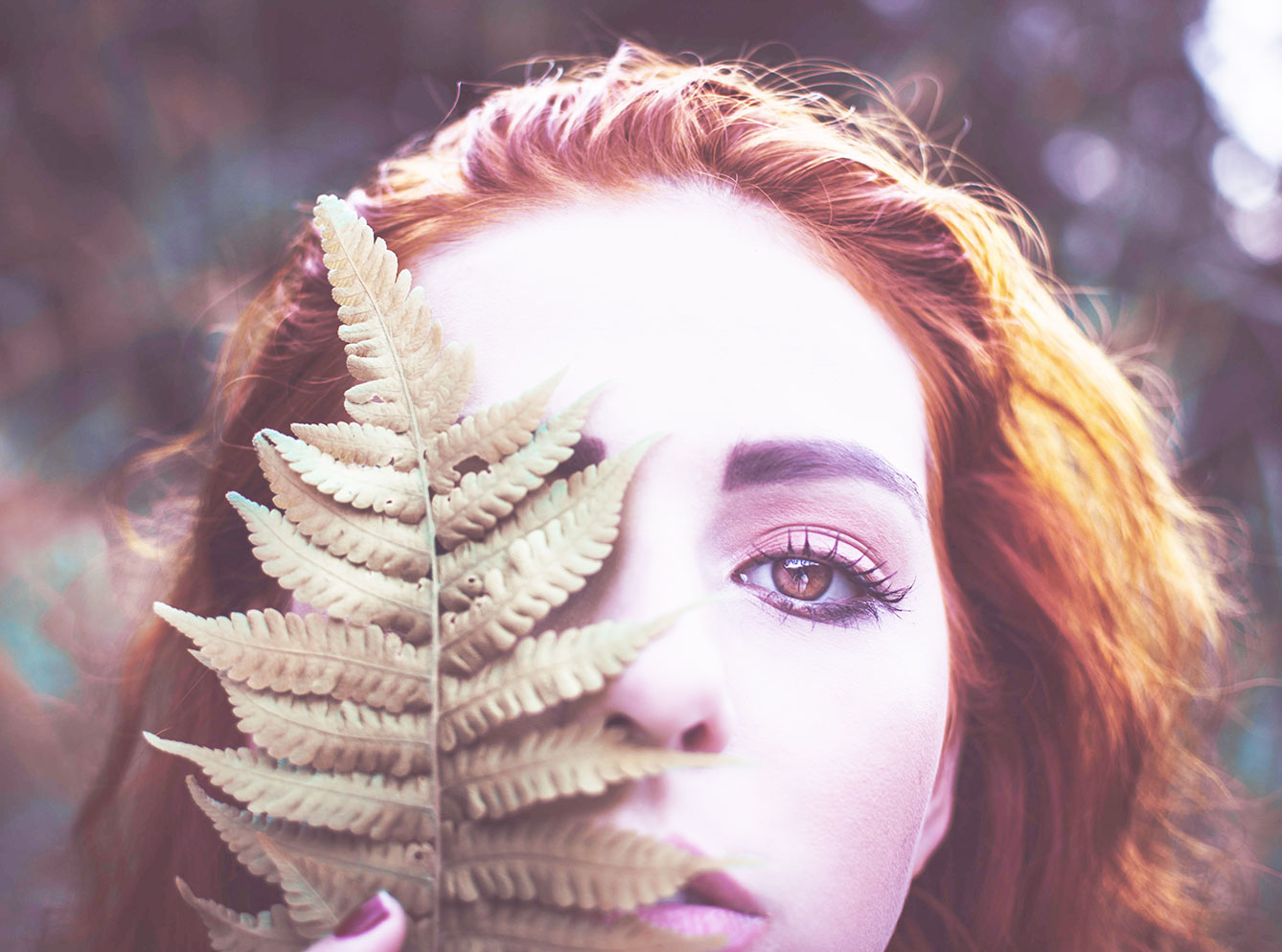
Her Story
Ceridwen is a powerful Welsh sorceress, and one of the most powerful witches in Celtic mythology. A mother and a wise woman all at once, she is blessed by the gift of poetic wisdom, inspiration, and prophecy, called collectively Awen in Welsh lore. This power comes from her magical cauldron, where she brews great potions to help others. She has many of these abilities herself without the cauldron’s power. She also has a magical throne, from which she derives her sovereignty and some of her powers.
Potions brewed from her cauldron range in effect, such as changing the appearances of others, allowing the imbiber to shapeshift, or give the gift of Awen itself. Though her potions grant the gift, they are also quite dangerous. After the gift is given, a single drop of the potion has the power to kill. Ceridwen is thus careful with whom she gives her potions to, as she wishes no harm on others but knows that power comes with a price.
Depending on the translation Ceridwen can also be seen as a goddess, specifically a creator or sovereignty goddess. She is sometimes depicted as a mother or a crone figure. Her story was recorded centuries after it was first told, and her status as sorceress may have been to make the story more applicable to a Christian audience, reducing a goddess to merely a powerful white witch who helps others.
In this form, modern neopagans worship her as a prominent deity of inspiration, creation and transformation.
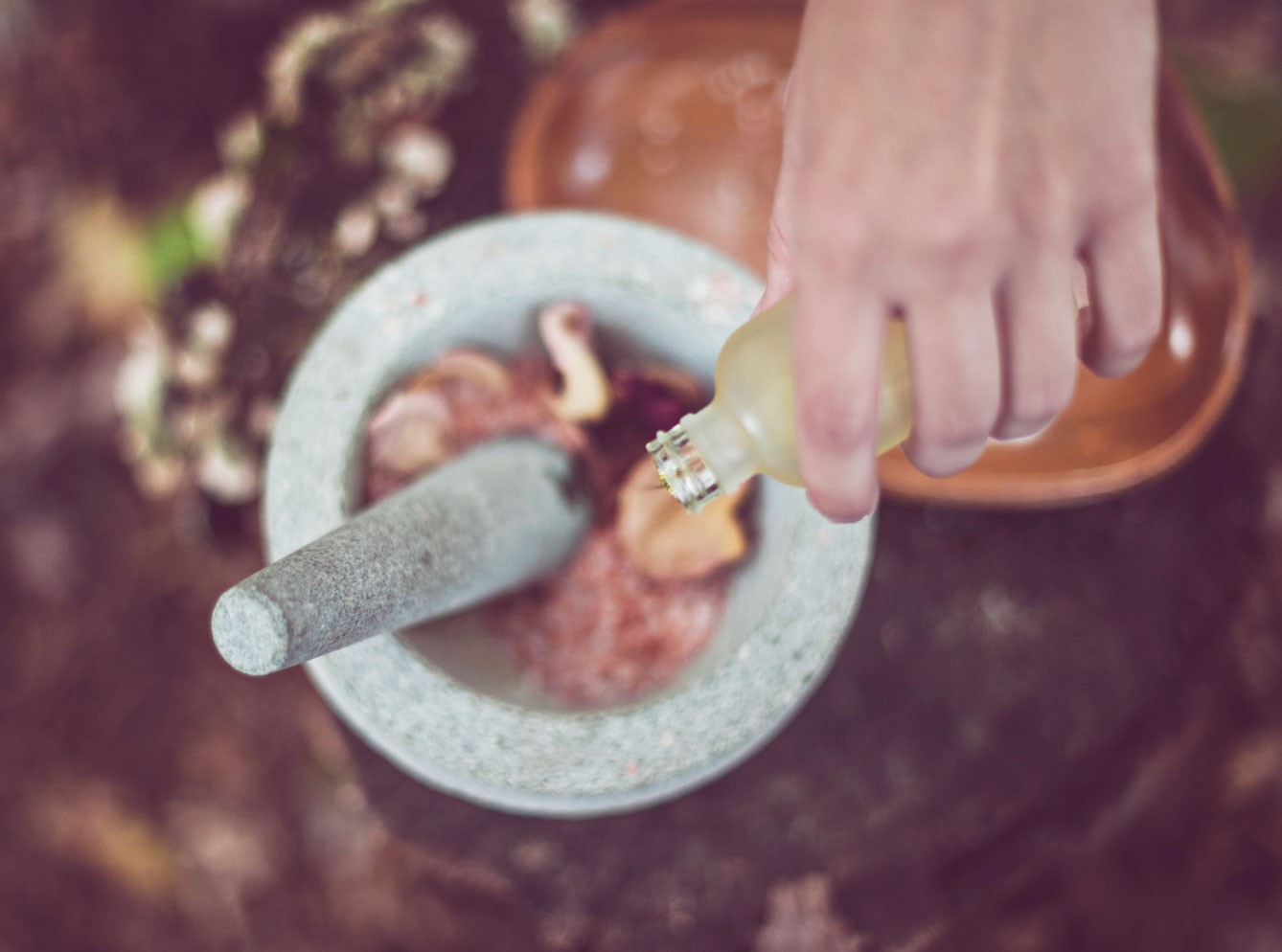
Symbols of the Goddess Ceridwen
- Associations: Magic, Rebirth, transformation, fertility, wisdom, poetry, creativity, herbalism, and the harvest.
- Colors: Silver, Purple, Black, Grey, Green
- Animals: Crow, hen, white sow, pigs, hare.
- Crystals: sunstone, rainbow moonstone, turquoise, citrine
Can we use the symbolism and significance of Ceridwen’s story to inspire our own transformation and re-invention? How can we brew up new ideas, wisdom and insight within our own creative cauldron? Don’t ever doubt your ability to transform as an artist. You are keenly connected to your soul and your creative power.
Check out this Pinterest Board dedicated to Ceridwen…
The Goddess Ceridwen
Artist Re-invention PROMPT
- Take a look at your studio or creative space. Do you like how it is set up? Could you rearrange or reorganize it so it fits your needs better as your are now? Resetting your creative area can bring in new energy and new ideas – the perfect environment for invention!
No Leaders Please
by Charles Bukowski
I love this poem by Charles Bukowski. It speaks directly to our need to re-imagine our lives and define ourselves by ourselves and no one else. We are the masters of our creative journey. Enjoy
“Invent yourself and then reinvent yourself,
don’t swim in the same slough.
invent yourself and then reinvent yourself and
stay out of the clutches of mediocrity.
invent yourself and then reinvent yourself,
change your tone and shape so often that they can never categorize you.
reinvigorate yourself and accept what is
but only on the terms that you have invented
and reinvented.
be self-taught.
and reinvent your life because you must;
it is your life and its history
and the present
belong only to you.”
No Leaders Please
WORD OF THE MONTH
Re-invention
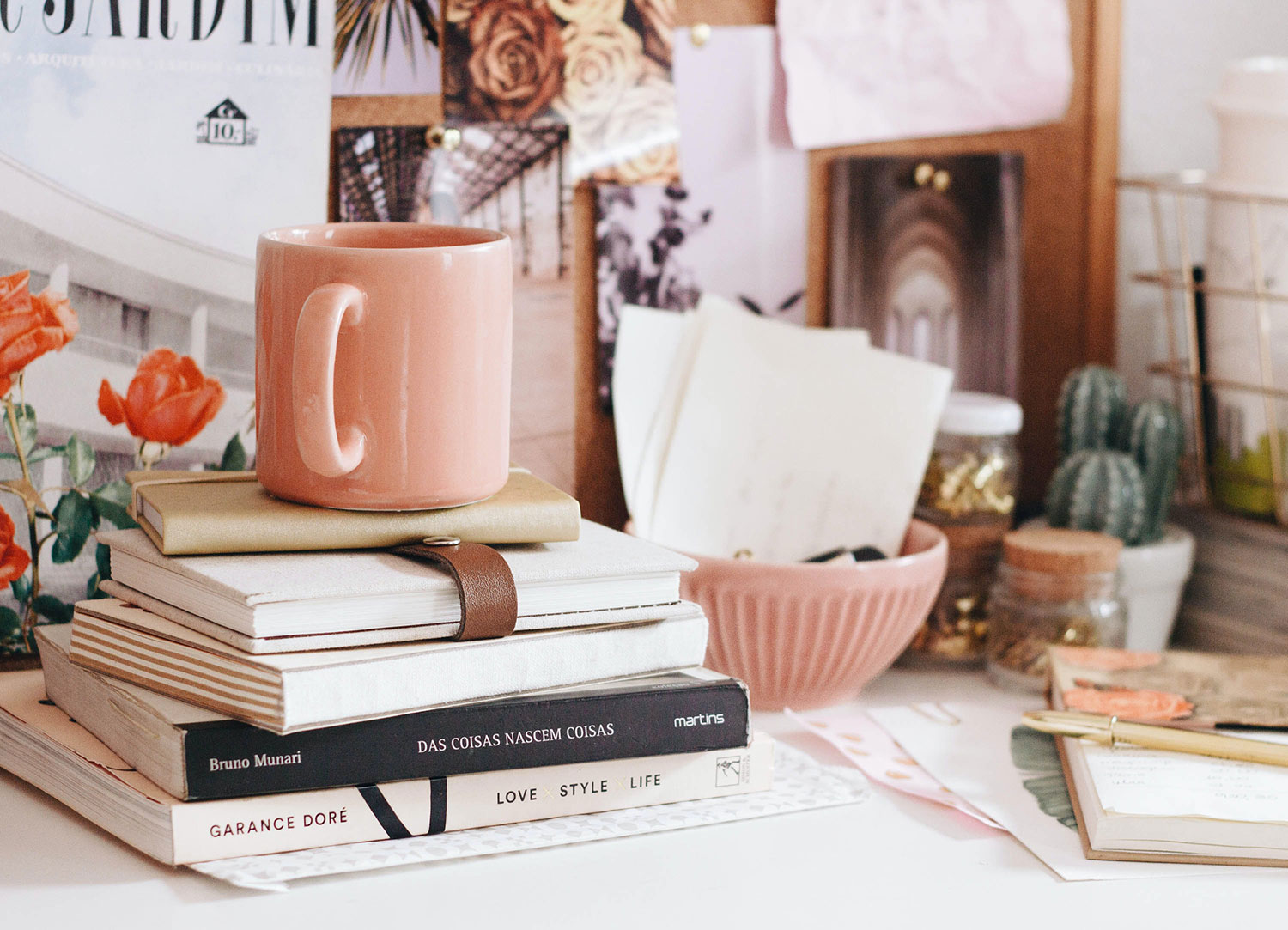
re-invention : the action or process through which something is changed so much that it appears to be entirely new.
Why do we cling to the comfortable? Why do we walk around in roles that no longer fit us? Why do we fear the unknown, the new, the undefined? We fear these things in our life and our artistic practise because we seek to avoid pain. Rejection. Abandonment. Criticism. These feelings are real but the truth of these discomforts are mostly made of illusion. The beautiful thing about being an artist is that we get to practice courage in our art first. Then, in time, within our day to day life. So do something in your art that makes you feel uncomfortable, shed the rules you have put upon yourself, combine elements of your artwork to create something completely different! Re-invent yourself!
“Reinvent yourself over and over and over and over and over until you find home. There is no timeline for the soul.”
– Malebo Sephodi
Word of the Month - Re-invention
Beyond the Beyond Meditation
WITH RACHEL HILLARY
I am sharing this beautiful Meditation from one of my favorite meditation masters – Rachel Hillary. This one is so inspiring and encourages us to expand and grow. So allow about 20 mins to enjoy this special time connecting with yourself and sinking into the wonderful journey Rachel takes you on.
Rachel will share a little about this experience –
Are you ready to go on a journey? This is a simple but powerful meditative experience to reconnect you to your true self, who you are beyond the stories, beyond your persona, your true essence, found in the feeling space, the expanse.
lots of love,
Rachel x
“Similar to a butterfly, I’ve gone through a metamorphosis, been released from my dark cocoon, embraced my wings, and soared!”
– Dana Arcuri
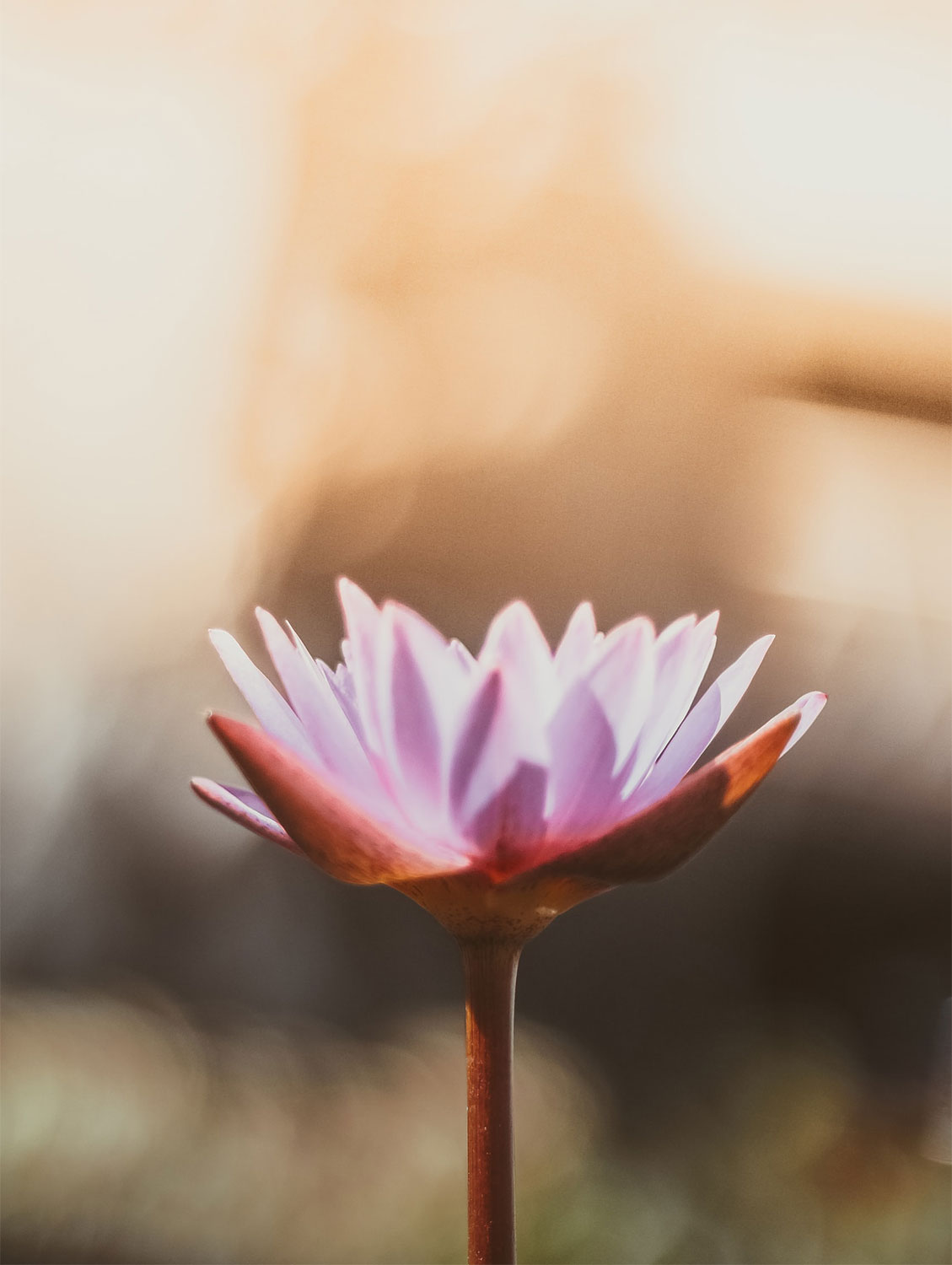
Beyond Meditation
You can download more meditations and connect with Rachel here…
Monthly Affirmation
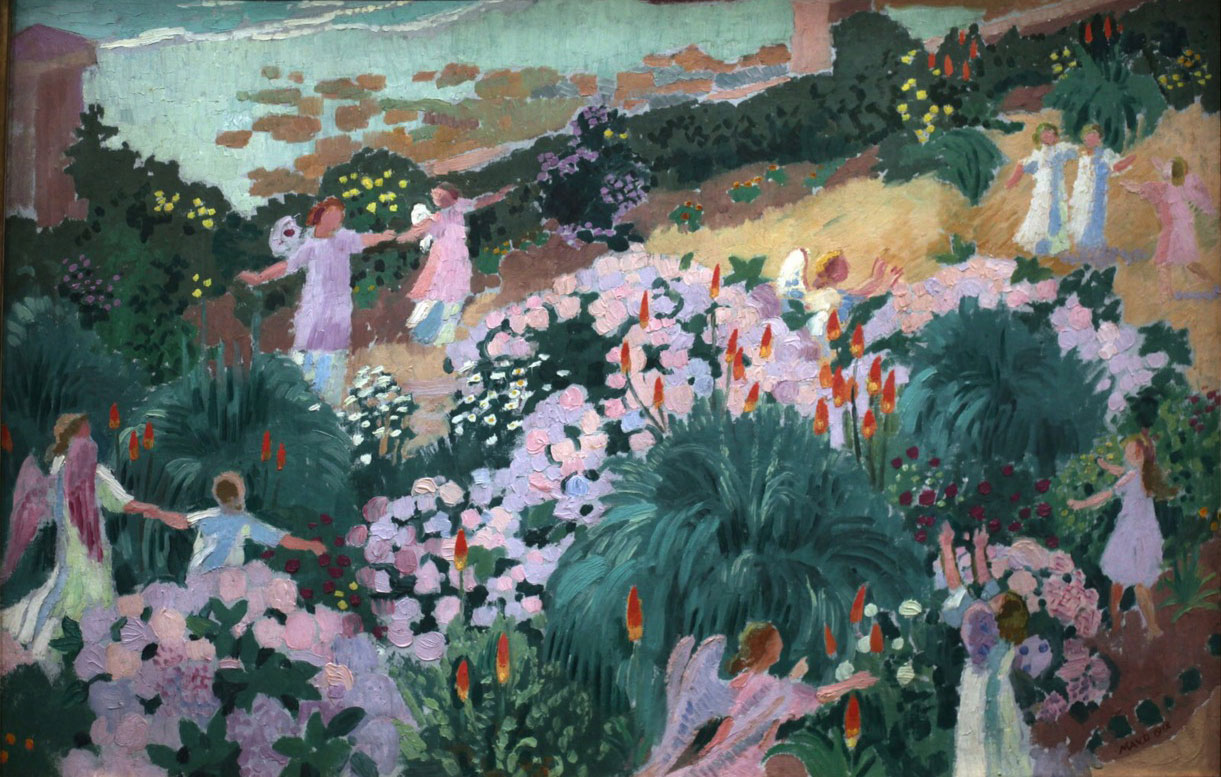
Color Palette of the Month
This month, I couldn’t help but be inspired by our master artist, Maurice Denis. Denis used absolutely bewitching colors! As a key figure at the beginning of the Nabis movement, Denis valued the expressive power of color to communicate symbolism and emotion over realistic representation. So we are in for a treat for some exploration with our color language. When we are looking to re-invent our creative practice it is highly recommended to look at what colors we are drawn to and then perhaps combine them with a few new hues! See what happens! Or radically commit yourself to using a palette that is completely unfamiliar to you! Denis does this in his body of work, exploring and experimenting wildly during his creative life. I am especially drawn to his work entitled “Paradise”. I really enjoy the unique use of soft mauves, gold, blue greens, lavenders, pinks and soft teals. So soothing! The pops of orange and red really spark it up!
As always, work with colors that call to you and never doubt your creative intuition. Your colors may look entirely different and that’s ok.

“Remember that a painting – before it is a battle horse, a nude model, or some anecdote – is essentially a flat surface covered with colours assembled in a certain order.”
– Maurice Denis
Color Palette
Master Artist Guide
Maurice Denis
This month, I’m so very excited to bring you the work and story of Parisian painter, Maurice Denis. I had the pleasure of seeing many of his works this past Spring in Paris at the D’Orsay Museum. Denis was a significant and influential artist that straddled the transition between impressionism and modern art. He literally re-invented and re-imagined how he expressed himself several times over his lifetime. His philosophy about creative expression and beauty is inspiring. So let’s learn more about this fascinating French artist…
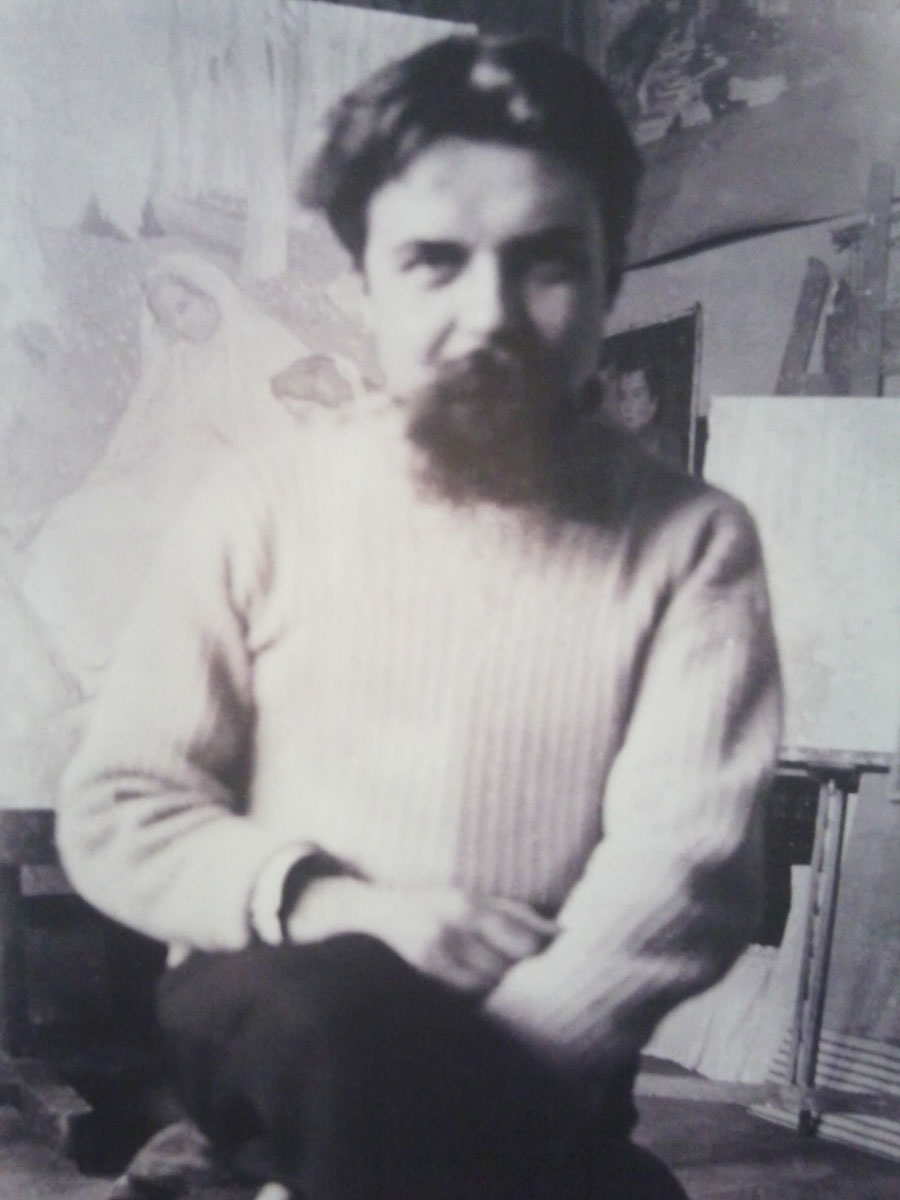
Childhood
Maurice Denis was born on November 25, 1870 in the coastal town of Granville in Normandy, where his parents had moved to escape from the Franco-Prussian War; though they would later return, with their only child, to the house of Saint-Germain-en-Laye, in the cozy suburbs of Paris. Maurice’s father worked as a railway company official, and his mother was a milliner and seamstress.
Raised in a catholic household, Denis was informed by religious feelings, and by a passion and talent for art, from an early age. As a teenager, he often visited churches and cathedrals, and came to admire the work of Fra Angelico; at the age of thirteen, he began to take drawing classes, making sketches from the Old Masters in the Louvre.
Coming from a well-off family, Denis received a classical education at the Lycee Condorcet, one of the most prestigious high schools in Paris, where he met fellow artists and future Nabis Édouard Vuillard. By all accounts, Denis was an excellent student, receiving numerous distinctions, but in 1888 he left the school to enroll at the Académie Julian, the private art school of the painter and teacher Rodolphe Julian, which had produced many notable painters across the nineteenth century; the following year, Denis was accepted into the prestigious École des Beaux-Arts.
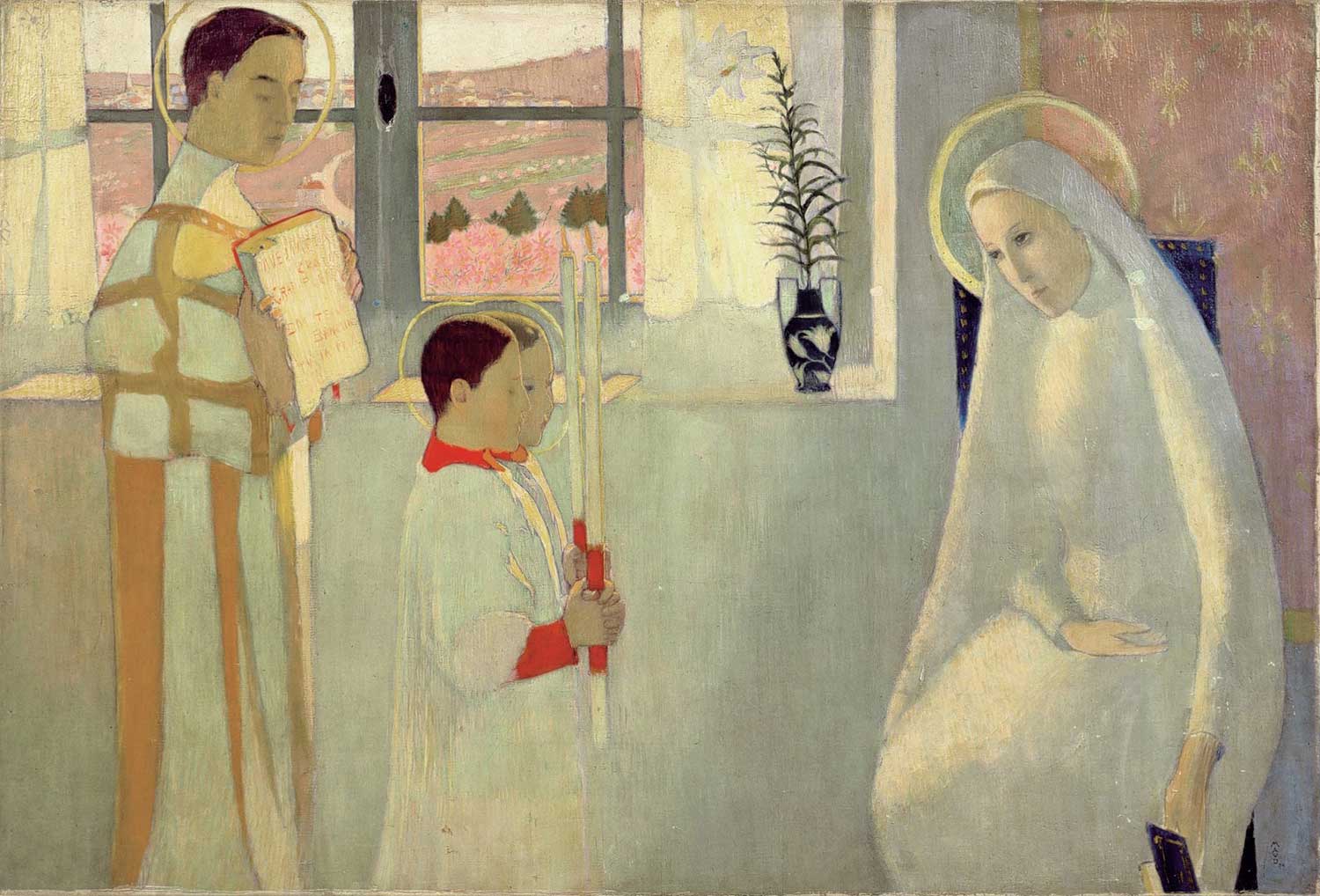
Catholic Mystery, 1889
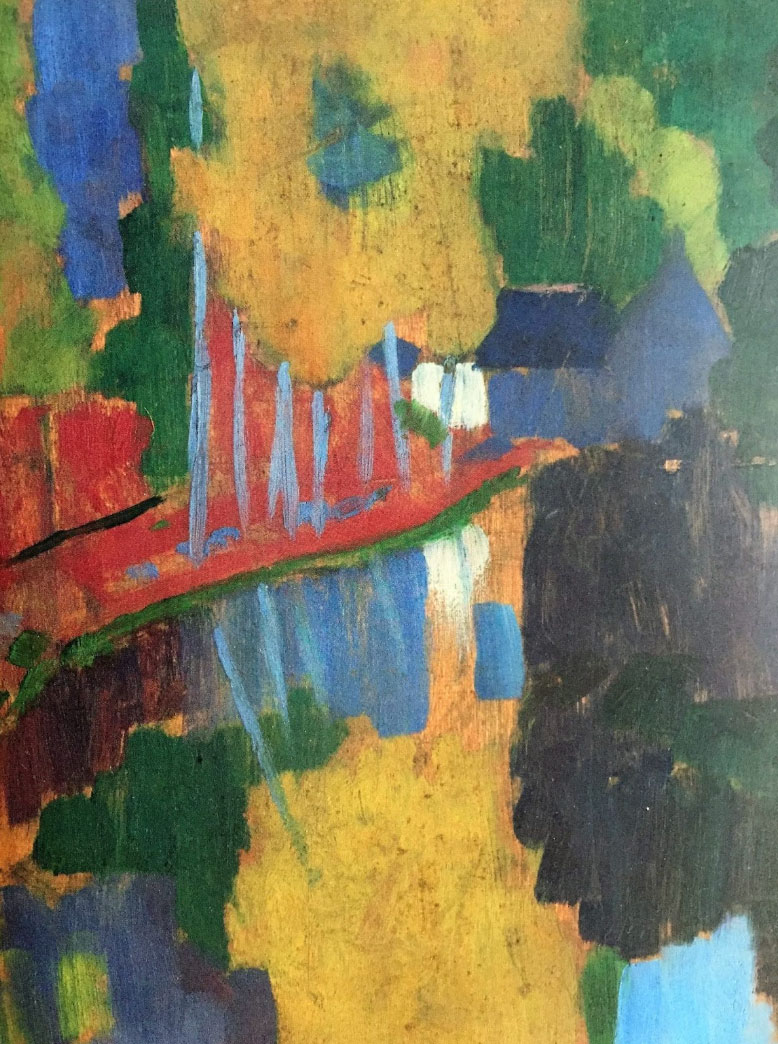
Paul Sérusier
The Talisman: The Aven River at the Bois d’Amour, 1888
Early training and work
At the Académie Julian, Denis studied alongside his old school friends Vuillard and Roussel. He also befriended two artists who would go on to be centrally involved in the formation of the Nabi group, Pierre Bonnard and Paul Sérusier. At this time, Denis was deeply influenced by the Symbolist movement, in particular the work of Paul Gauguin, whose first exhibition at the Café Volpini in 1889 was a revelation to Denis.
One day in 1888, Sérusier showed his friends at Julian a painting he had made under the guidance of Gauguin earlier that year in Pont-Aven, a district of rural Britanny which had hosted various artists’ groupings since the 1860s, and where the older painter, Gauguin, had based himself intermittently since 1886. Denis and his friends were so amazed by Sérusier’s work – a small landscape painted on the back of a cigar-box – that they formed an artistic movement based on the new artistic vision which it seemed to capture, naming themselves, after the Hebrew term for “prophet”, “Les Nabis”. They accorded such power to Sérusier’s particular painting that it became known as The Talisman.
Following Gaugin’s example, this group of young French painters, including Sérusier, Denis, Bonnard, Vuillard, Roussel, and others, freed themselves from the task of meticulously representing visual sensation which had preoccupied French art since Impressionism. Instead, they attempted to capture the spiritual and emotional content of their subject-matter – often of landscapes – giving their work a spiritual flavor preempted in certain respects by Symbolist painting. Rejecting ideas of linear perspectives and modeling, the Nabis also drew inspiration from the decorative arts and – partly via Gauguin – from Japonism, then approaching the height of its fashion in Europe.
As well as producing a series of highly experimental paintings during the late 1880s and early 1890s, Maurice Denis quickly established himself as the most eloquent theorist of the Nabis. His first article on the new style, “Definition of Neo-Traditionalism”, was published in Art et Critique in 1890, and was taken as a kind of manifesto for the group. In it, Denis rejects Impressionism’s obsession with naturalistic accuracy, and defends the idea of the spiritual function of art. His famous opening quote established the Nabis as the forerunners of all subsequent experiments in pictorial abstraction over the next half-century: “Remember, that a picture, before it is a picture of a battle horse, a nude woman, or some story, is essentially a flat surface covered in colors arranged in a certain order.”.
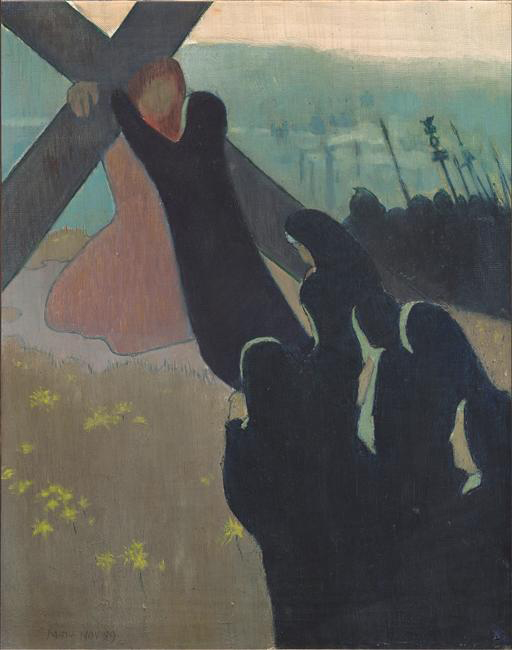
Climbing to Calvary, 1889
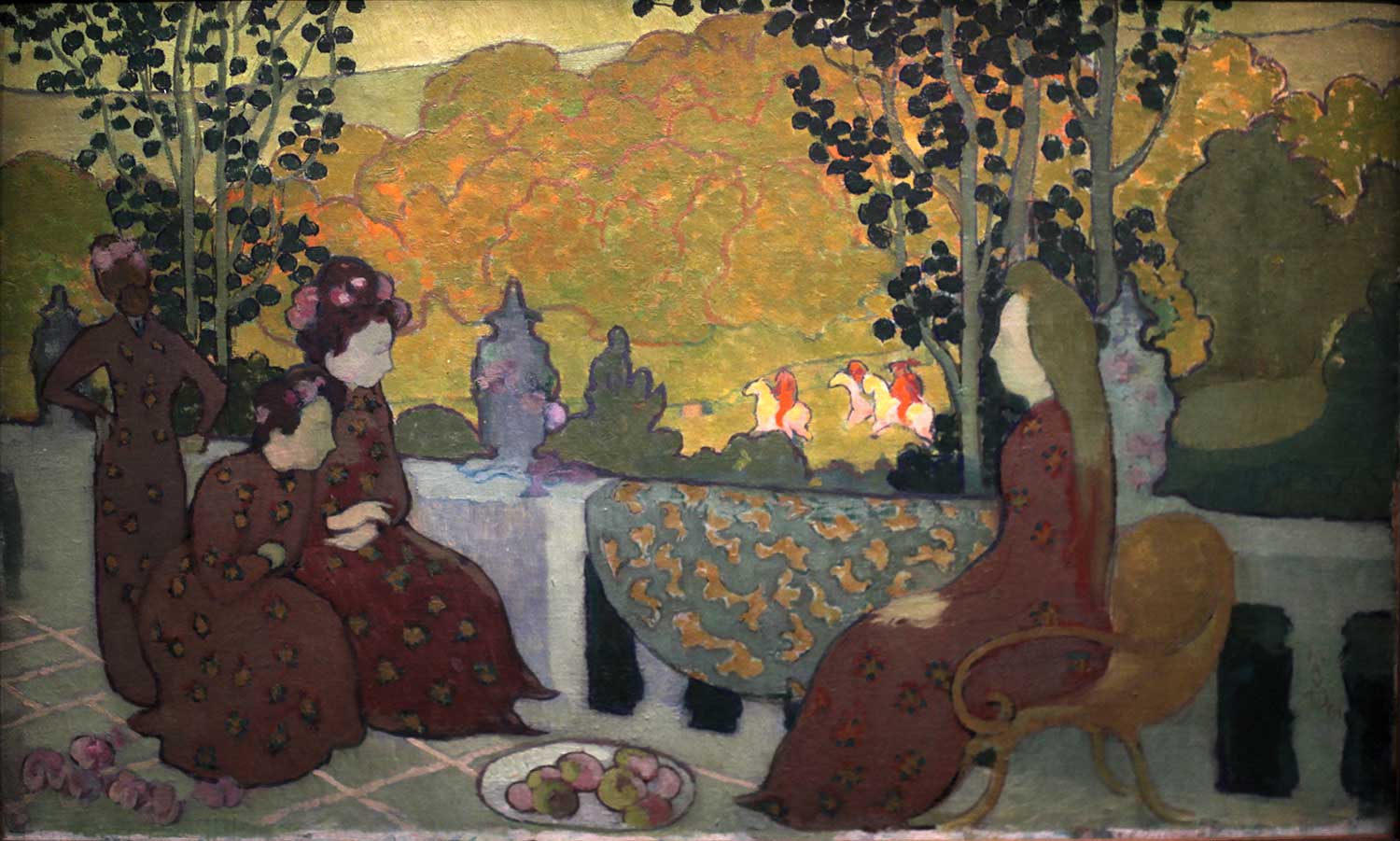
Musée d’Orsay
September Evening, 1891
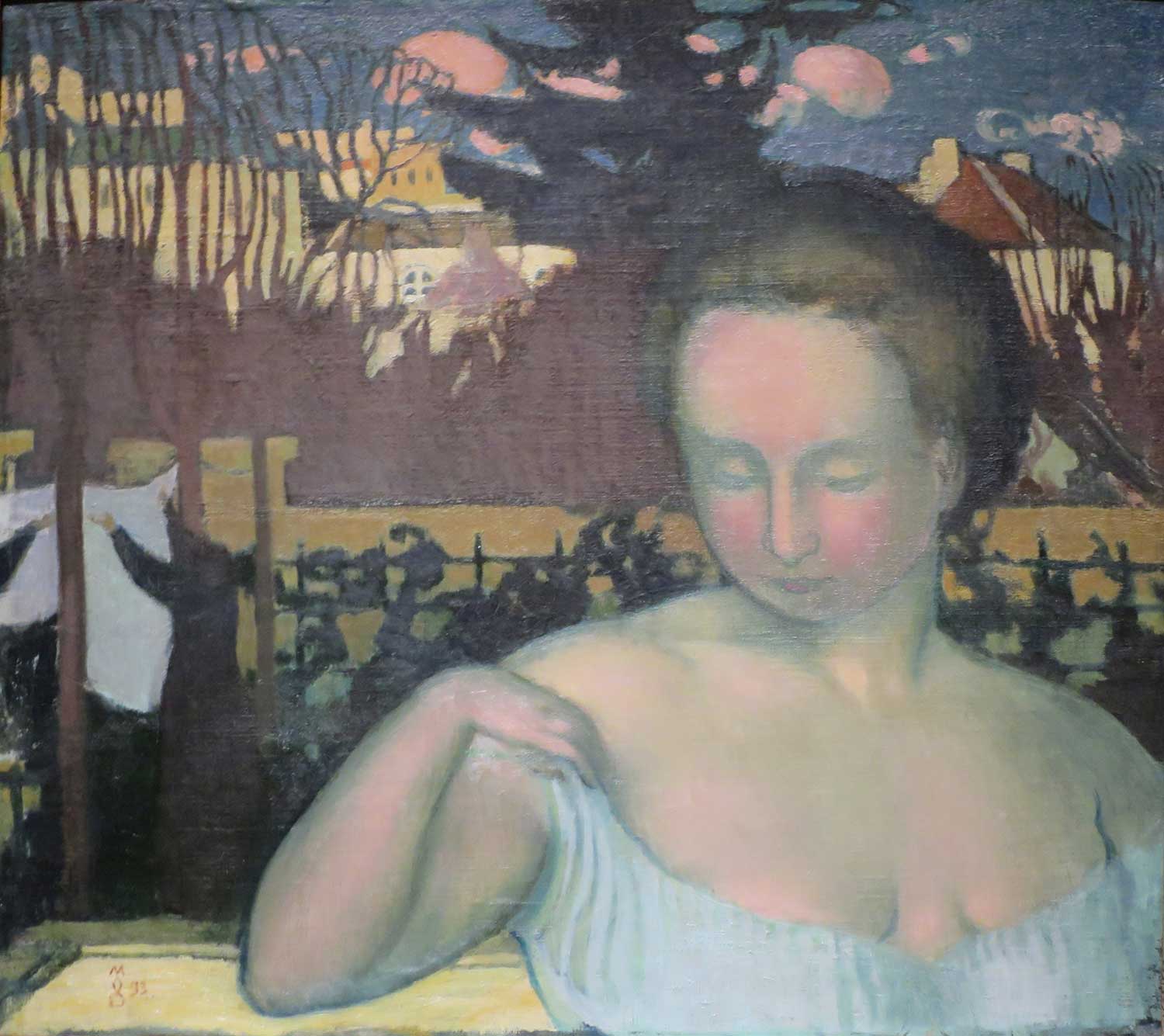
Portrait of Marthe, 1893
Mature Period
Denis was nicknamed the “Nabi of the beautiful icons”, because of his compulsion towards a kind of religious iconography informed by his Catholicism, very different from the unorthodox or theosophical Spirituality which influenced other members of the Nabi group. Nonetheless, between 1888 and 1893, Denis exhibited many times with the other group members, and during this period, a commonality of approach remained. In June 1893, Denis married the musician Marthe Meurier, having completed many portraits of her, and proclaimed his love for her repeatedly in his diaries, since meeting her in 1890.
Love, spirituality, religion, Marthe: these were Denis’s preferred subject-matters during the early days of the Nabis, and they would remain so for the rest of his life. In the mid-1890s, Denis became more influenced by the decorative arts – already a key influence on the Nabi movement, which placed a stress on ‘style’.
Denis was interested in the interplay between art, architecture, and design, particularly in religious settings, and undertook various commissions to decorate churches and private houses, while increasingly incorporating purely decorative features into his paintings. He also explored various strands of commercial design, devising patterns and models for carpets, ceramics, stained-glass windows, screens, and fans.
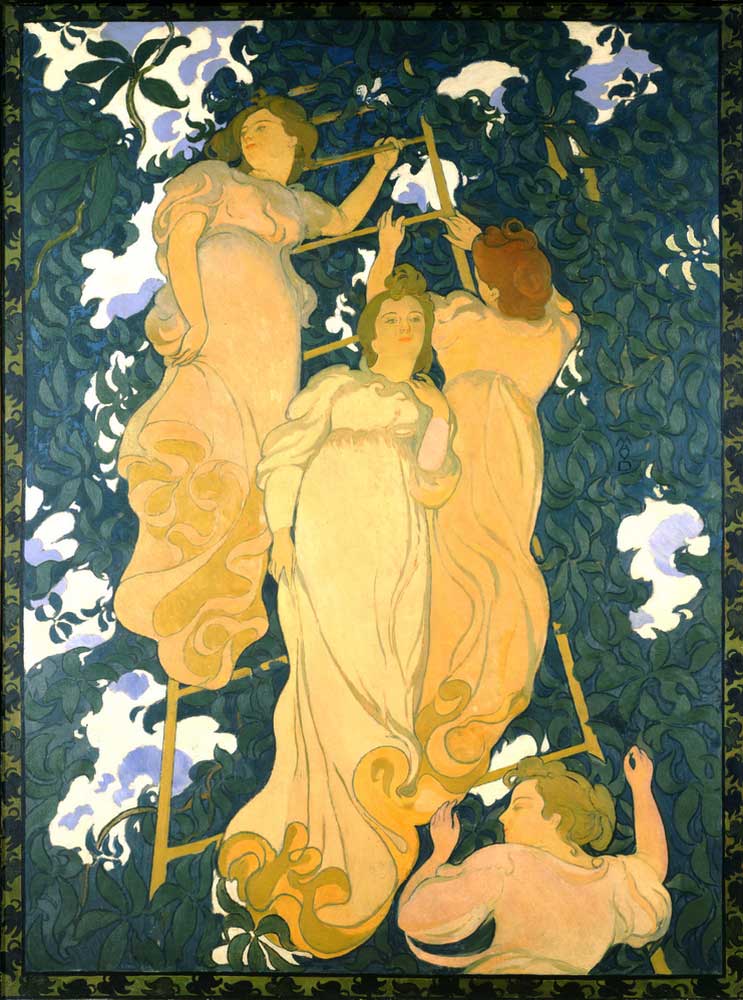
The Ladder in the Foliage, 1892
Late Period
When Denis was forty-one, his father died, an event that had a great personal impact on the artist. In 1919, after twenty-six years of marriage, Denis’s wife passed way. Heartbroken, he painted a chapel in her memory. The same year, he founded the Ateliers d’Art Sacré (literally “Workshops of Sacred Art”) with Georges Desvallières. The aim of this group was to reconcile religious faith with modern culture by producing art for religious settings – churches, cathedrals – which would dispense with the academicism and realism of previous approaches to such work, and to train a new generation of religious artists and craftsmen. The group renovated several churches between 1919 and the mid-1930s, when a lack of commissions forced them to disband. Amongst their most notable commissions was a set of paintings for the Église du Saint-Esprit in Paris, completed in 1934. Although Denis’s work from this period was profoundly influenced by his faith, he also produced murals for civic buildings across the 1920s-30s.
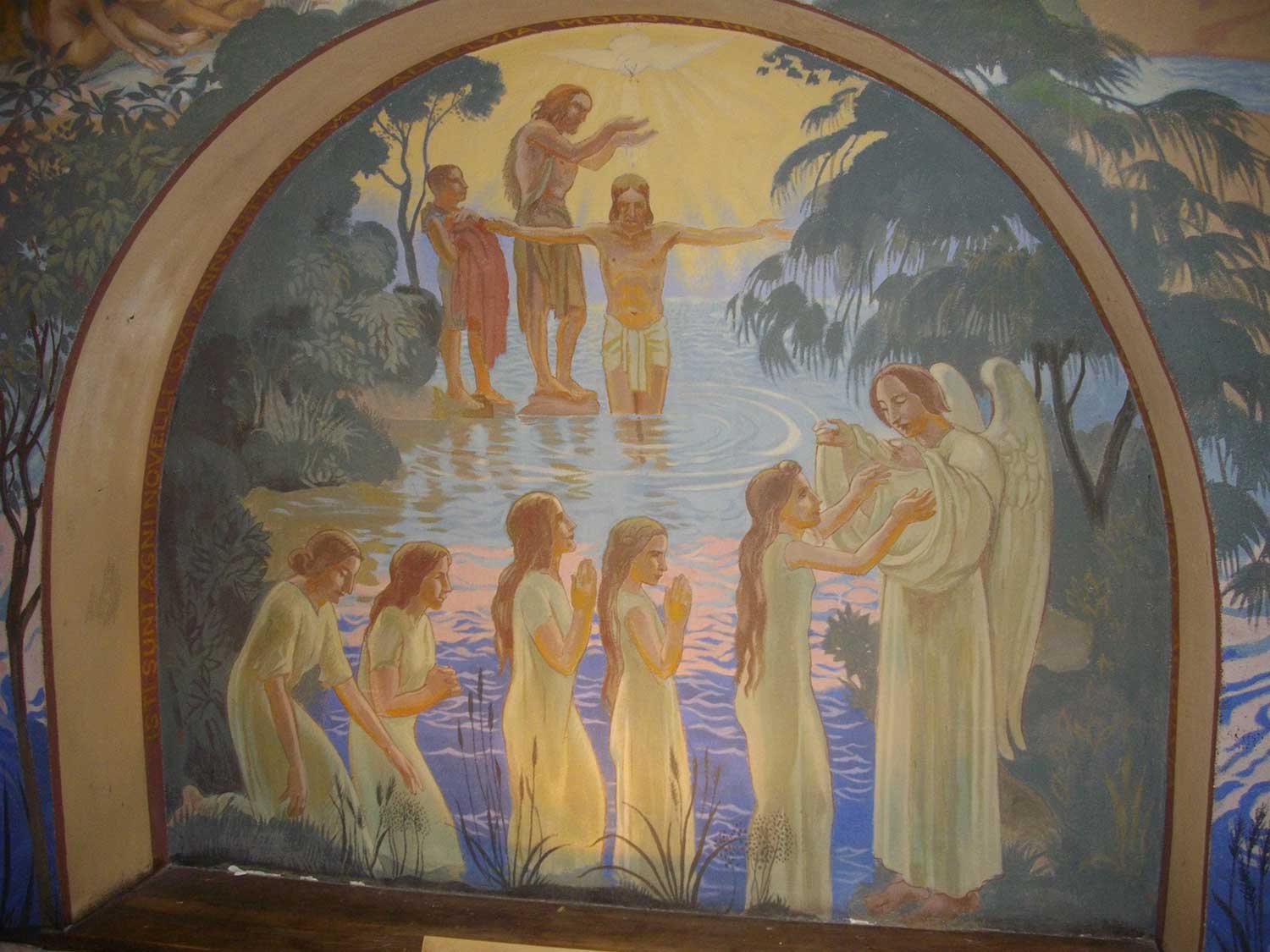
Mural from the Church of Saint-Nicaise. Reims
In 1921, when Denis was 51 years old, he returned to Italy with one of his daughters. On this trip he met Elisabeth Graterolleore, whom he would marry the following year. The first of Maurice and Elisabeth’s two children was born in 1922.
Denis continued to paint prolifically in his old age: in total, he finished over twenty mural projects between 1916 and 1943. That year, still involved in various creative and academic projects, Denis was run over by a car, and died on the way to the hospital.
The Legacy of Maurice Denis
Maurice Denis was a vital figure during the transitional period between Impressionism and the radical abstraction of early twentieth-century modern art. Although by the end of his life he was chiefly known as one of the most respected art critics in Europe, today he is generally regarded as the last ‘Great French Painter’ still awaiting rediscovery.
Denis was an influential figure within several overlapping artistic movements of the late-nineteenth century: Symbolism, Post-Impressionism, Japonism, Neo-Traditionalism, Neo-Classicism, and Synthetism. His work of the 1880s-90s, and his iconic manifesto of 1890, anticipated the move towards pictorial abstraction that would become the fundamental feature of modern painting from Cubism onwards, while his students included the post-Cubist and Art Deco painter Tamara de Lempicka, who credited him with teaching her “the craft of painting”. At the same time, Denis stands out for his advocacy of tradition – both artistic and cultural – in an era often defined by its radical antipathy to the past. In his “Definition of Neo-Traditionalism”, he had proclaimed that “everything is contained in the beauty of the work”, emphasizing a timeless ideal of beauty which set his approach apart from the “progressive” formalism of Neo-Impressionists such as Georges Seurat.
As both a devout Catholic and a modern artist of great vision and skill, Denis also helped to redefine Religious art, bringing it back to the forefront of creative advances in the visual and decorative fields, a position it had arguably not occupied since the era of Da Vinci and Michelangelo. Denis’s influence in this regard can be sensed in the spiritual approach of many subsequent modern artists, including Wassily Kandinsky, whose hugely influential tract Concerning the Spiritual in Art (1911) might not have been written without the formative example of Denis’s theories. Subsequent modern art groupings, from the De Stijl movement of 1910s Holland to the Abstract Expressionist movement of 1950s New York, also took their cue in part from the Denis’s conceptual integration of visual abstraction and spiritual expressiveness. In this sense, Denis’s influence on the story of modern art – or at least the influence of the ideal for which he stood – can be sensed almost everywhere.
“The profoundness of our emotions comes from the sufficiency of these lines and these colors to explain themselves.. ..everything is contained in the beauty of the work. “
– Maurice Denis
Enjoy this slideshow of his work…
Here’s a Pinterest board full of work from Maurice Denis
Master Artist Guide
Sketchbook Explorations
EXPLORATION 1
Goddess Inspired
With our monthly goddess, Ceridwen, as our muse, let’s create a portrait or expression of this powerful Goddess (or one you choose to work with). Feel free to use any medium that brings you joy! How can you envision yourself as this being of re-creation and inspiration? What’s brewing in your creative cauldron?
I loved creating my Ceridwen on my iPad in a style inspired by our master artist, Maurice Denis.
Check out our curated Pinterest board to get your creative ideas flowing –
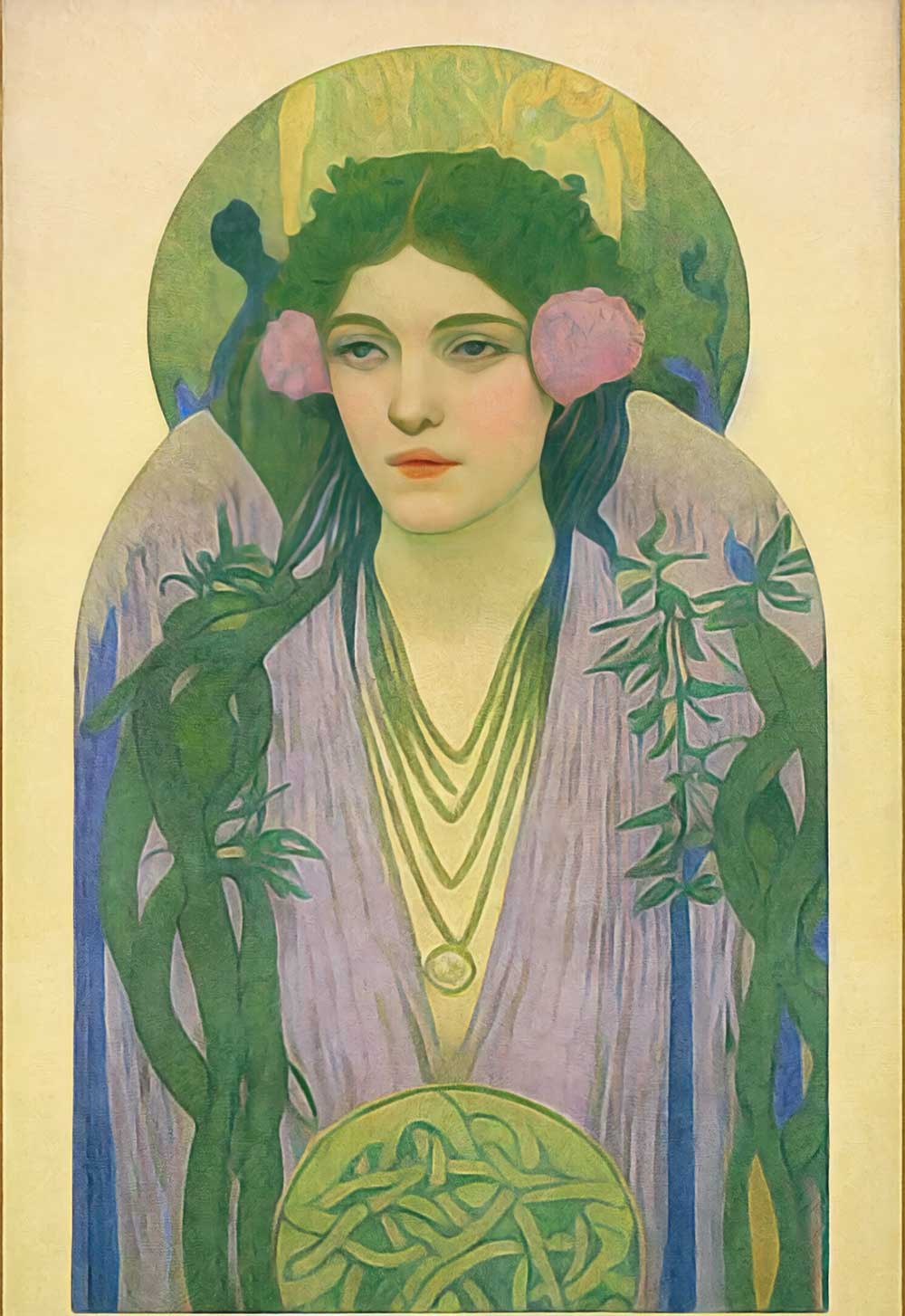
EXPLORATION 2
Inspired by Maurice Denis
Have a peek at Denis’ beautiful works and then pick a piece to do a study of or create a piece inspired by his work! Remember, Denis’ valued expression, symbolism, style and emotion over realism. He flattens his forms and focuses on color and mood. How can this free you from creating realistic art and move more towards stylistic abstraction?
While creating my Denis inspired piece I paid close attention to how I divided up the space and the subtle mood and posture of the figures. It was fun to simplify and focus and color.
Here is a Pinterest board I’ve curated to inspire you –
EXPLORATION 3
Re-invention Play
Dedicate a few pages in your sketchbook to explore what you create currently, what colors you use, what materials you employ and then see what happens when you add in new things. New subject matter, hues, mediums. How can you mix things up? Can you blend two styles you love? Or combine your materials in new ways? Pay attention to what excites you or even feels intimidating. This means you are pushing against your comfort zone. That’s a good thing!
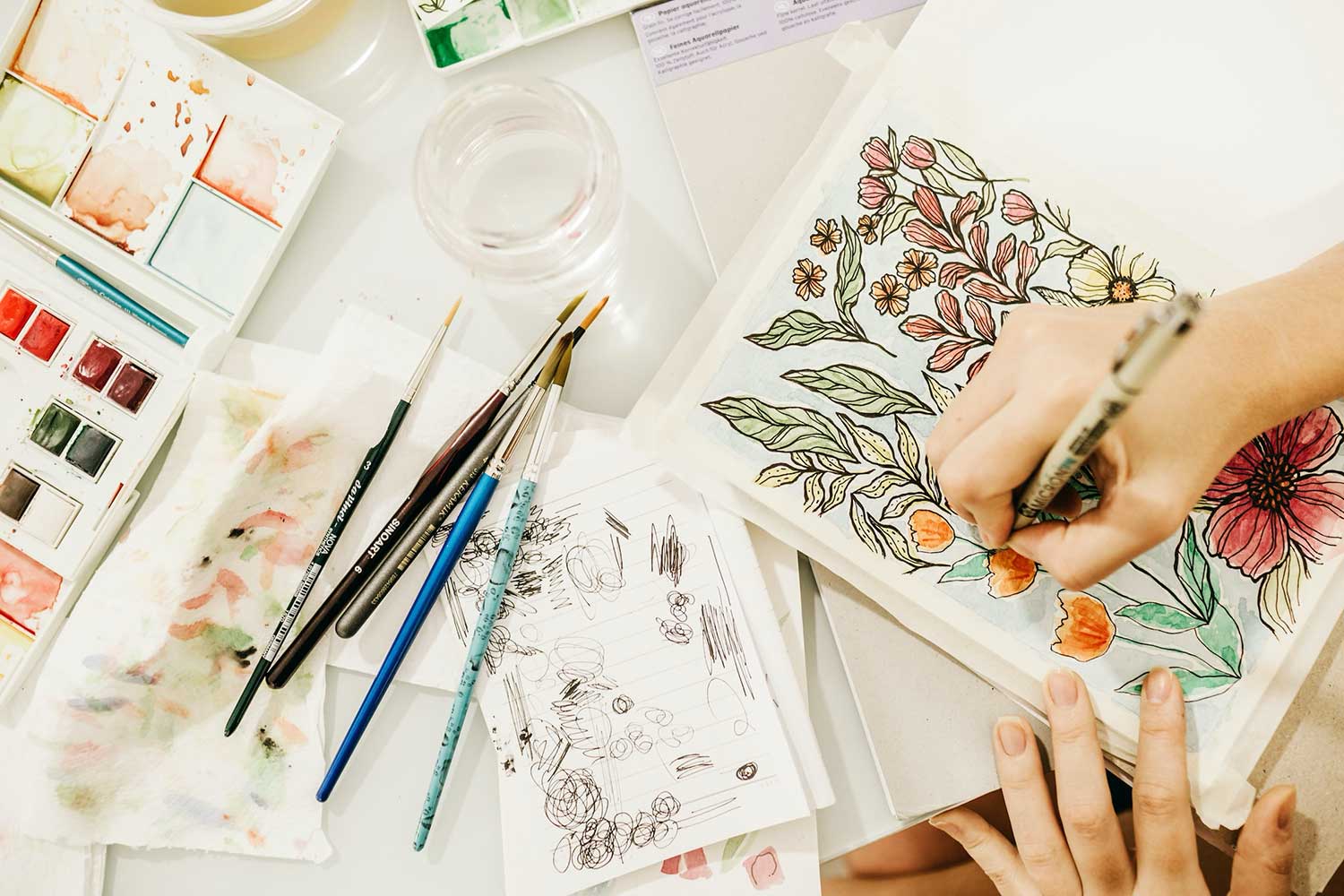
“Today, each artist must undertake to invent himself, a lifelong act of creation that constitutes the essential content of the artist’s work. The meaning of art in our time flows from this function of self-creation.”
– Harold Rosenberg
MONTHLY ART LESSON
Sacred Reading
With Meg Vellejos McCoy
So excited to share this beautiful lesson from Meg Vellejos McCoy this month! In this lesson, we will move through a journey of the four steps of Lectio Divina, which means Sacred Reading, a contemplative exercise that prepares and opens the way for an encounter beyond the ordinary.
Join Meg for this fun and contemplative lesson!
STUDIOWORKS
Submission Calls
STUDIOWORKS PODCAST
issue forty-five
You can also listen to this month’s issue of the Studioworks journal. I find I love listening to books, podcasts and music while I draw, paint or go on a long walk. Enjoy.
Studioworks : issue forty-five
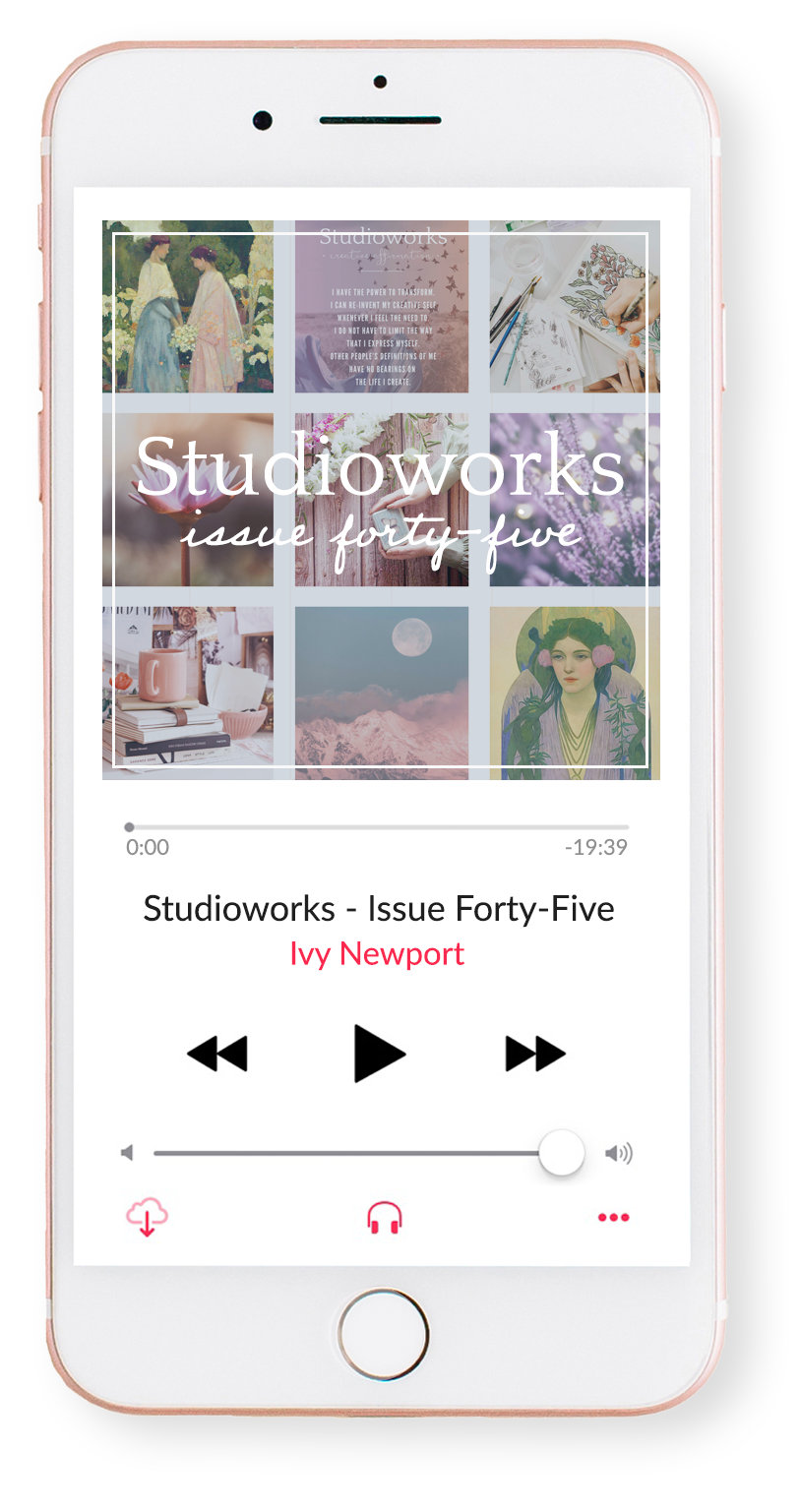
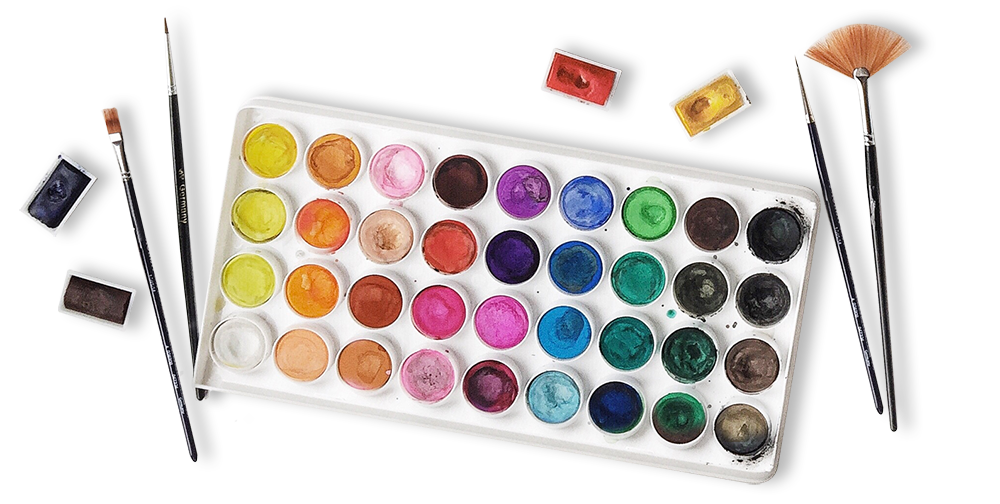
inspiration: curated
Books to Discover & Enjoy
MUSIC PLAYLIST
I had so much fun curating this list. I hope you enjoy!!
PINTEREST BOARDS
NEW CLASSES ADDED TO STUDIOWORKS
Here are just a few of our fantastic classes! I highly recommend checking them out if you haven’t already. Enjoy!

© 2019 IVYNEWPORT, LLC ALL RIGHTS RESERVED.

